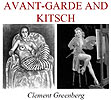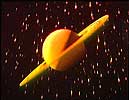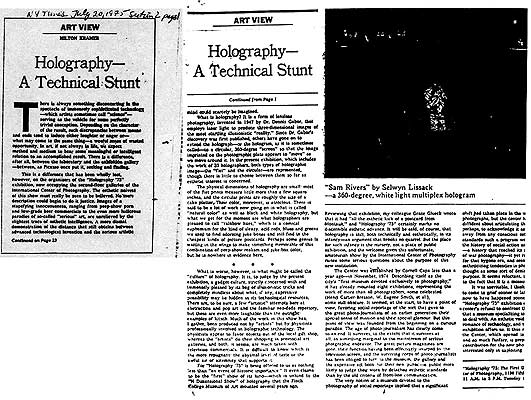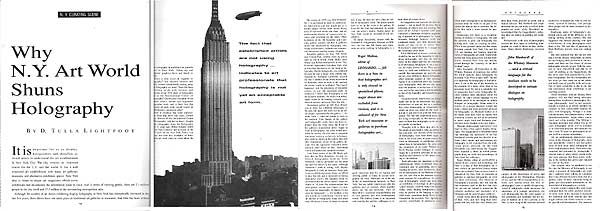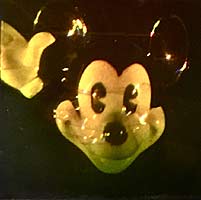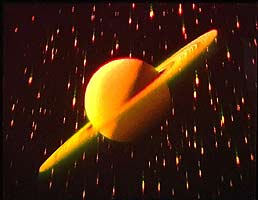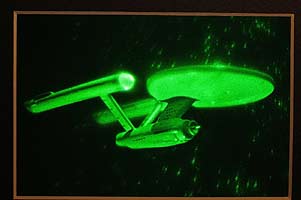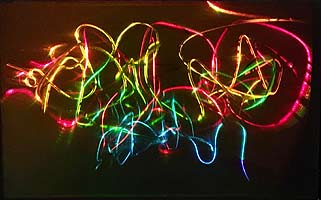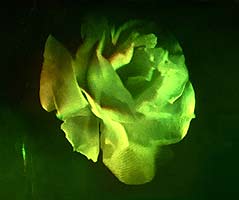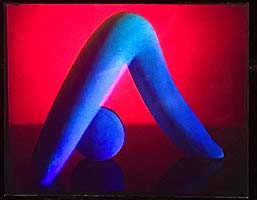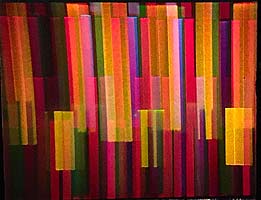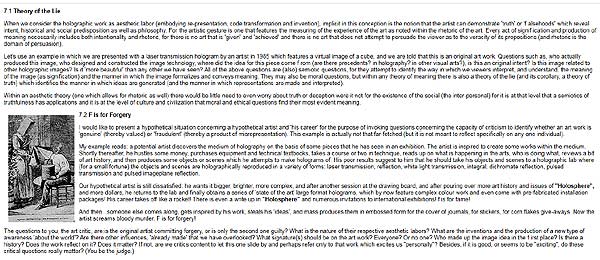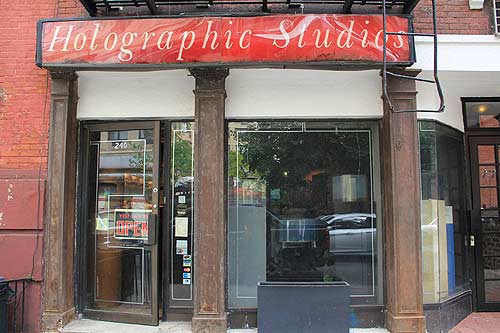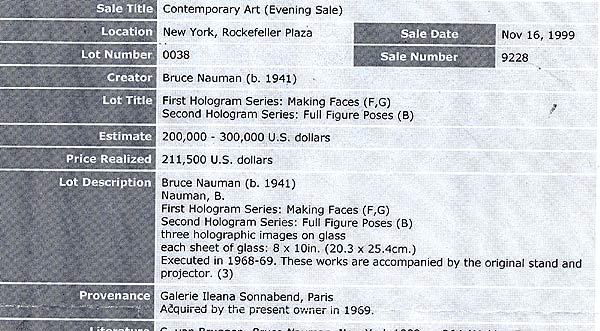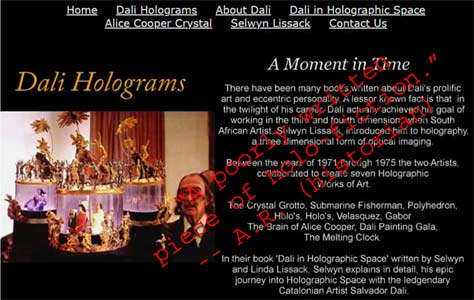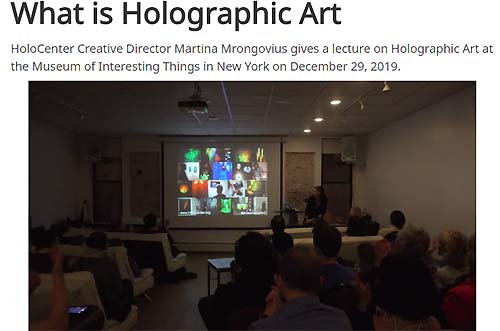'How Much For That Holo?' -- Case Studies
Al Razutis 2021
This essay is part of a multi-part series on the arts and culture of holography with a focus on N. American arts, media and institutions of the contemporary period. The topic here is the valuation (pricing, historicizing, to include writings about) of holographic art and display works, especially those which have been anointed with the 'fine arts' label. The personalities identified here were selected to typify some of the problems and characteristics of the 'holography culture', a societal construct which gives meaning and value to some works, and not others. As you will read, some of these 'holographic art' valuations and artists are the product of fiction, outright lies or misrepresentations, what some benevolently call 'salemanship', but which this author decries as our present-day 'fallacy of post-modern culture', a condition that has similarly doomed others when that 'whole scene dies in disgrace' and rejection.
INTRODUCTION
I had NO idea that I would be opening Pandora's Box when I asked the question "How much is that holo worth?"
I had no idea that arbitrary pricing, faked histories, conveniently stacked resumes would join an otherwise dubious practice of assigning the words "fine art" (and the prices for such status) to works that could only dubiously be called such.
Honestly, this essay didn't start out as an investigative piece, but as soon as I saw the rush to pull out those 'collections' on Face Book on the group page 'Holography' (when a newcomer asked 'who had holos to sell?'), I mean the rush to the change machine at the legacy laundromat was 'awesome', to use a word much overused in the holography dens. The usual suspects were there as were the antiquarians. Enclosed here are some snippets from the conversations and more.
-------------------------
We'll examine these valuations, collections, and arrive at a conclusion, and it won't be pretty, will set off lots of mouth flapping at the legacy laundromat. That's certain. That's what happens when truth is uncovered, and the fictions that have kept that scene 'alive' for decades are revealed and the conceit comes crashing down, right around the same time as the 'foreclosure' and 'bankruptcy' seizure sheriffs arrive.
This isn't a pretty picture. But it has to be told. A death in the family is never a pretty affair, the family in this case being the culture of world of holographers, and the death being the death of history and truthful common sense.
How much is it worth? which could be paraphrased in any number of more 'proper' ways, discursive ways, historical and academic ways to make the essay 'sound good'. But really, it boils down to "What is a hologram worth?" "How much for that holo?" "Who said so?" "What are their qualifications to make judgments?", and finally "And why do you call it fine art"?
I hope the rumor mill got all that. When in line 'waiting for change' at the legacy laundromat people get bored, grind those rumors a bit to amuse.
Let's have some case examples of people on record giving them value, and explaining their reasons. It comes with the good, the bad, and the ugly.
--------------------------------
Let's look at principles in fine art elsewhere, and see how 'valuation' works there, beginning with these questions:
"Is it authentic? Is it a rip-off? A Fake? An imitation, or worse?"
"Is the seller who they say they are? Is the artist who they say they are?"
"Can you prove it? Show me the provenance, now show me the real goods."
Finally, "What is this selling price based on?"
------------------------------------
1.0 Holography, Art and Kitsch
"Kitsch is mechanical and operates by formula. Kitsch is vicarious experience and faked sensations. Kitsch changes according to style but always remains the same. Kitsch is the epitome
of all that is spurious in the life of our times. Kitsch pretends to demand nothing of its customers except their money -- not even their time."
-- Clement Greenberg
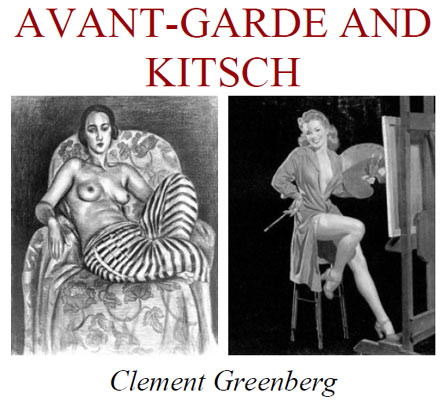
In this contemporary era (of the 2020's) the cultural embrace of fakery, lies, vicarious experience and faked sensations provides fertile ground for all kinds of 'kitsch culture' and its artifacts. But what is kitsch? Does it apply to holographic art and display? Certainly a number of curators including a current generation use this word to describe works they marginalize or avoid as 'bad art' in hologrpahic exhibitions which will be recounted below.
The issue of 'kitsch' as applied to 'holographic art galleries', with a focus on the exhibitions at the 'Holos Gallery' in San Francisco was explored directly by the author (AR) in his 1986 essay published in Wavefront Magazine, which you can download in PDF here:
'Holos Gallery: Rise of Commercialism and Kitsch'
** You can note that this essay was written in 1986, after the opening of the first west-coast gallery showing commercial and novelty related holography as what it declared as 'art'. Whether this article applies 35 years later will be tested in the commentary below.
"Because it can be turned out mechanically, kitsch has become an integral part of our productive system in a way in which true culture could never be, except accidentally... Kitsch's enormout profits are a source of temptation to the avant-garde itself, and members have not always resisted this temptation..." --- Clement Greenberg
1970's: "Problem with holo kitsch posing as art, and dilettantes posing as artists"
When NYC holography curators / organizers (for the exhibition "Holography 1975: The First Decade") in the mid 1970's met their New York Times art critic Hilton Kramer - from that point on something went really 'bad':
"It is, to judge by the present exhibition, a gadget culture, strictly concerned with and immensely pleased by its bag of illusionistic tricks and completely mindless about what, if any, expressive possibilities may lie hidden in its technological resources. There are, to be sure, a few artistic attempts here at abstraction and pop art and the familiar neo-dada repertory, but these are even more laughable than the outright examples of kitsch. Much of the work has, I gather, been produced not by artists but by physicists professionally involved in holographic technology. The physicists appear to favor objects out of the local gift shop, whereas the artists do their shopping in provincial art galleries, and both, it seems, are much taken with television commercials. It is difficult to know which is the more repugnant: the abysmal level of taste or the awful air of solemnity that supports it." (Hilton Kramer)
Download Kramer NY Times article in PDF from this web site at http://www.alchemists.com/fb/kramer_nytimes_jul20-1975.pdf
It wasn't just Hilton Kramer who ripped into the 1975 holography show in NYC for its form and lack of content, but also one of the participating artists, Harriet Casdin-Silver, who wrote and is quoted in 'Holographic Visions' by Sean F. Johnston:
"I wanted to take my art out of that show [. . .] I thought it stank to high heaven. There was so little real art in it [. . .] But from the holographic artist's point of view, the art critics stood in the doorway, looked in and really saw nothing [. . .] I never saw them at my installation. The show should not have happened, it was too early on. Typical people who had six weeks of holography called themselves artists."
After this, one could wonder "would holography ever recover from this?"
Jump ahead to the 1980's for a moment, when this only 'mattered to some'
In 1987, the same problem (the lack of critical dialog and theory in holography) for holographic artists and NYC 'art scene' was examined as per this article for Wavefront by D. Tulla Lightfoot: 'Why New York Art World Shuns Holography' (html page).
And this 'did not matter' to those forming alliances and 'industries'
Similarly in 1987, a new publication called Holographics International, Suny Bains, Editor and Publisher, offered articles which blurred any distinctions between aesthetic styles, between kitsch and art, fine and commercial, between all crucial differences in 'intent', and in its editorial criticized artists for being 'not professional' enough in their dealings. In other words, what was necessary for holography to succeed was for it to act as an 'industry' (think, film industry in Hollywood). Academics and scientists are welcome as long as they play along. This new publication was also a re-enactment of the editorial style and policy of the New York Museum of Hologrpahy publication 'Holosphere'in the 1980's.
Here, in 1987 and for the next decades, commercial subjects in holography would be celebrated only in terms of 'sales'. And the issue generated a 'who to know list' in all aspects of holo business. Here, everything good was everything selling, anything, as long as it came in a lab coat, was 'doing business', and no critical essays to be found among them. Here, everything would be celebrated as long as it didn't promote 'divisiveness', feature critics, 'difficult people', and it worked to make the holo scene look good to the 'public' and make money for all. This came straight from the Editor's comment page and this came on the heels of the 'Wavefront Magazine' era which featured many disputatious critical articles on art and commerce in its short publication history.
In my view this 1987 publication typifies the shift in holo culture from anything goes to how much money does it make. The call for artists to 'professionalize' along skilled crafts lines, product lines, brands and logos is clearly linked to a 'rise in cultural production of kitsch' as would be defined by the Greenberg - Hilton Kramer school, and many other art curators of that period.
You can find a downloadable pdf copy of 'Holographics International' 1987 issue on the Sunny Bains website: http://www.sunnybains.com/wp-content/uploads/2018/07/HI1.pdf All available editions of this publication are also available from the sunnybains.com site.
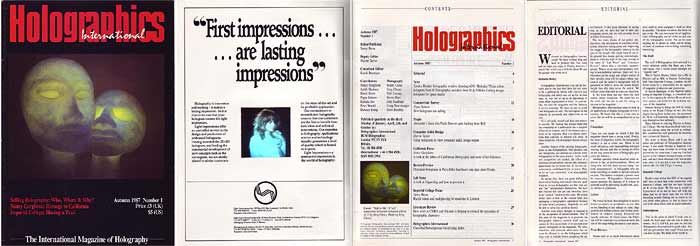
For pre-1987 periodicals on 'art and holography' to include 'business', and to compare editorial intents,
see 'Wavefront Holography Magazine' selection of 'back issues'

2020-21 POST SCRIPT: In response to some comments from Lon Moore (one of the artists discussed in the 'Holos Gallery' articles) I added the following sections and agreed I was too dismissive of 'kitsch' in holography.", meaning that the added perspective of recent decades allows us to see kitsch as a necessary component of popular culture, as the popular culture has been treated for decades, and not as a threat to 'fine arts' but as something that is related to popular consumption (of culture). (A.R., September 2020)
1.1 Lon Moore's Holos of found objects
Contemporary with any art works done 'as fine art' in holography in the 1970's and decades after, were works by Lon Moore that were done independent of any 'art intent', but which ended up in galleries anyways, and in art collections as 'art'. And some of the works were very popular, big sellers, allowed Lon to make a living at holography where others failed.
These works were for mass production, mass marketing, featured lower end prices than 'works of art'. We start with this 4" x 5" (image-plane, white light reflection hologram) 'Mouse' (or 'Mickey'), as well as another small piece by Moore called 'Rose' which this panel shows them in the top left top row, and their modest price (click to enlarge in separate window):
Lon Moore's holography career is interesting, a story in itself which can't be covered here in this essay. He was the 'first student at the San Francisco School of Holography' (the story is told here ). Although he was directly involved with Lloyd Cross, the SF School of Holography and multiplex activities in the 1970's, Lon Moore went on to work independently, created 'Celestial Holograms' to pursue this work, and he conducted classes where he taught a number of students (including many of the early 'Canadian holographers'!) holography. Further, and also importantly, he spent a decade turning his own works into commercial success stories, then ventured into a lucrative business enterprise making mass produced holograms, licensing the subjects and copies under the banner of 'Red Beam Holograms' in 1988, a sample of which is illustrated here:
Mass produced holograms, popular subjects, that came for a low ('non art') price of $25, shrink wrapped in a package whose back sides contained the following statements, information, or what I would call 'curated contents' which transcended the question of 'is this art, or is this kitsch?'. It didn't matter to the makers, their enthusiasm for holography was to be shared directly with a public whose reasons and interests were as varied and personal as any art and its clients gets.
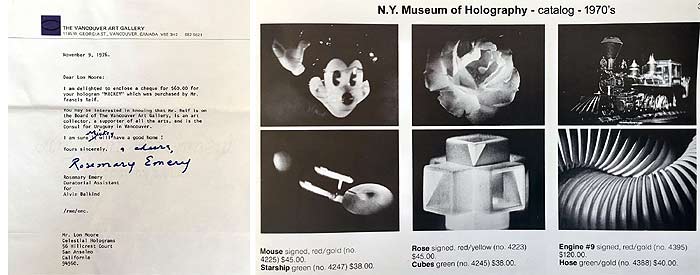

A better look at Saturn hologram on video
Remember, this very lucrative (according to Lon Moore) enterprise was done with a rather total indifference as to the questions 'is it art'? And in this context, it is an important addition to the questions of 'how much is that holo' actually 'worth'?
'What is display holography?'
Before there was 'holo kitsch' or 'holo art' there was science...
And it's clear from the outset, when holography was still basically a 'theory' in the 1940's that the task of scientists and engineers was to find applications for it. One such application was in 'optical holography' which sought to demonstrate all the marvelous qualities of this new invention by Dennis Gabor in 1947. When the 'LASER' was invented in 1960, and when it became usable in making 'holograms' in visible light in the mid 1960's and suddenly popular, this is when we saw all kinds of examples of 'display holography' arise.
Simply put, the engineering applications of holography preceded any interest in the aesthetics of holographic art.
When Emmett Leith and Juris Uppatnieks wanted to demonstrate what holography could do in 1962 - 64, now that the laser was invented to deliver pure near single wavelength light, they showed off a toy train imaged in a off-axis transmission hologram, their invention, independent of the train.
When scientists engineers wanted to show off a theory and its practical applications they usually picked any object they liked to make a holographic image of. Sometimes they invited artists 'to collaborate', like Conductron Corp. did in the 60's with Bruce Nauman.
But usually 'display holography', as it came to be called, was there to display holography, its principles, its capabilities. It was considered inferior to 'art holography' only by the academics or aesthetes and particularly in valuation and price in which 'art holograms' commanded much more money. This split between 'art' and 'display' is the split between arts and crafts going back eons, and perhaps is also reflected between philosophies of the 'ideal' and the 'practical' in culture.
So, in this sense, the term Kitsch may not apply as a reference for valuating these works of expressedly commercial and mass-distribution interests; in fact, the concept of kitsch and / or aesthetic theories may have little bearing on these works, why they were made, and for whom. And that's a wake-up to a debate on holo arts and their interpretations.
----------------------------------
HISTORICAL NOTES (excerpted from "Optical Holography" Presentation Notes, 2008, Ajeya Karajgikar):
(1964) 'Train and Bird' is the first hologram ever made with a laser using the off-axis technique. This pioneer image was produced in 1964 by Emmett Leith and Juris Upatnieks at the University of Michigan only four years after the invention of the laser. They recognized from their work in side-reading radar that holography could be used as a 3-D visual medium. In 1962 they read Gabor's paper and 'simply out of curiosity' decided to duplicate Gabor's technique using the laser and an 'off-axis' technique borrowed from their work in the development of side-reading radar. The result was the first laser transmission hologram of 3-D objects (a toy train and bird). These transmission holograms produced images with clarity and realistic depth but required laser light to view the holographic image.
-----------------------------
(1962) Russian scientist Yuri N. Denisyuk, State Optical Institute in Leningrad, USSR, combined holography with 1908 Nobel Laureate Gabriel Lippmann's work in natural color photography. Denisyuk's approach produced a white-light reflection hologram which, for the first time, could be viewed in light from an ordinary incandescent light bulb.
----------------------------
(1967) Larry Siebert of the Conductron Corporation used a pulsed laser that he designed to make the first hologram of a person. The Conductron Corporation (later acquired by McDonnell Douglas Electronics Corporation) played an important role in the early days of commercial display holography. Their mass production and large plate capabilities serviced a tentative but potentially large market. Their gang-printed reflection holograms provided burgeoning marketing organizations with an exciting new promotional tool. Their large 18 x 24 inch plates made unusual trade show displays. The trend continued for several years until the recession in the early 1970s forced the company to close the pulsed laser facility.
Valuation of Larry Siebert and Schinella Holograms 'Estate Sale Appraisal by Jody Burns 2017'
----------------------------
How does 'inspiration to create holograms' work here?
Let's say you see a 'hologram' on exhibit in the late 60's or early 70's, and let's say you are simply amazed!. (This happened many times, believe me.) And you want to learn how to make them, and you seek out those who can help. That certainly happened to Lon Moore after seeing a hologram, and the people he found were located at the new San Francisco School of Holography founded by Lloyd Cross and Jerry Pethick. You can read more about this school and its first student Lon Moore here on this page of my McCormack archives.
Here are some commercial holograms, typically 4 x 5 inches, silver halide on glass, later on photopolymer, by Lon Moore, done in the early years and continuing into the 80's - 90's. They were highly successful in terms of sales, distribution, and when tied to his educational activities (teaching others holography) one can see that these works popularized holography everywhere. The fact that sometimes these works were shown as 'display holography' and in other cases (like the MIT Collection ) as 'fine art' speaks to the point of their intention and how various people received this work, and where. Mr. Moore was very clear to me in stating that he was not and is 'not interested in making holographic art'. And the prices of his works reflect that.
Lon Moore Solo Exhibition 'Basement Snapshots' at the Holos Gallery, San Francisco 1981
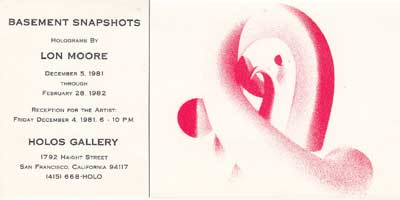


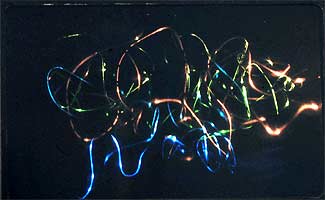
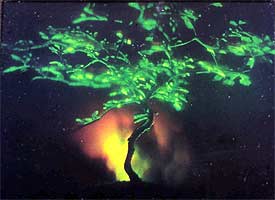
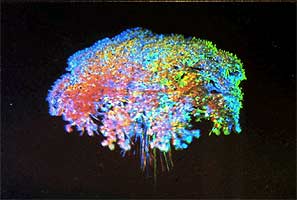
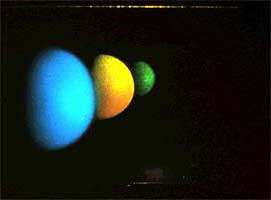
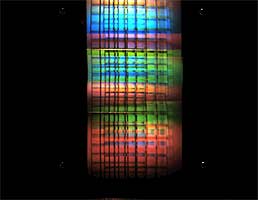

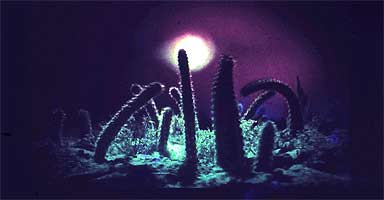
Exhibition included the above pictured titles (l to r, top to bottom):
'Strange Terrain', 'Totem' (multiple-plate collage), "Squiggles', 'Tree', 'Queen Anne's Lace', 'Spheres', 'Highrise', 'Fireworks',
'Desert'.
--- Also included in exhibition (from first group) 'Saturn', 'Still Life' (3 - color)
Lon Moore describes the process of selecting subjects for his works:
-- The artist was kind to respond about his work done four decades ago in this following (exctracted) account of creating some of the works pictured above.
So, Lon why did you shoot those particular objects?"
"Well, first of all I had to remember the obvious. I had no money then. So, in ‘74 when these were made, I had to be on the lookout for free subject matter. But I needed things of a certain small size, that had in my opinion, the potential to be interesting image-plane holograms.
"Holography had caused me to start looking at things in a different way than I had previously. The roses in the back yard of my home in Marin began to hold a new fascination. I looked at them closely every morning, noticing the texture, detail, and form as they went through various stages of blooming. And I probably looked a little crazy to any passerby as I examined them with my nose about three inches away from them.
"A similar process occurred with Pod, and Coil was some wire I found in the basement and subsequently arranged in the way you see...... A friend came over with Mickey and was dying to see what the mouse looked like in laser light. 'No detail ', I warned him, but then I lit him up and saw gleams moving all over the porcelain mouse face with any shift in my angle of view... So I shot it and many people laughed and loved it... also bought it.
"Back to Rose... In spite of the conventional wisdom (which still exists) that organic objects would 'move' too much to be recorded, I decided it was worth a try... Jerry Pethick had passed along to me his healthy disregard for conventional wisdom as it applied to holography... But I said 'healthy' disregard... I knew I had to come up with a plan... I was only using a 15mw HeNe.
"As it turned out, 'the impossible' was not that difficult.
"After choosing and cutting my perfect rose, I rushed it to a waiting vase of water already set up in the right spot on my Sandbox Table... Then I turned out the lights in my rather cool, very dark basement... I came back the next morning, turned on the laser, and without touching the table for any adjustments, made the 12 second exposure I thought I needed. Boom... hologram of a living rose.
"The Coil turned out to be a great object due to its flagrant parallax, and also because I could push it far out from the plane. Some objects work better than others when trying to project them that way. The Coil was mainly defined by its low information hot areas, and due to the predictable progression of loops, the viewer knows what they’re looking at even far off the plane.
"So again, I wasn’t trying to create ART... I was exploring what I could do with this type of holography, while admittedly trying to make a pleasing demonstration of the medium."
-- Lon Moore, 2021 interview with AR.
A curator - critic on the subject of realism in holography"Despite holography's appearance as one of the few entirely uncharted new mediums for art in the second half of the twentieth century, its acceptance by the art community was remarkably slow. Surveying the reception of laser holography in art from its invention in 1962 through 1993, the critic Edward Lucie - Smith noted that critics had almost universally considered it as 'irredeemable kitsch.' "Most critics found neither the choice of content nor the form of the work of high quality; many were perplexed by the nature of 'images [that] were disturbingly there and not there.' There are, of course, some aesthetic grounds for these complaints. Holograms suffer from what might be termed the 'stereoscope effect' where, precisely in their timeless realism and infinite depth of field, animate beings in particular often appear hauntingly unreal, as if revealed through a new type of taxidermy. Due to the relative complexity of the holographic process, it is also difficult to match medium and content reflexively, and thus to comment on the form of representation in the manner of visual art traditions such as those ranging from Dutch Realism to Abstract Expressionism. Underlying these aesthetic issues is perhaps a more fundamental theme that has haunted the aesthetics of holography: the relation of art and reality itself. Indeed, from some quarters this relation seemed to be the salient feature of holography. In 1986, Umberto Eco used holography as the framing model for his essay 'Travels in Hyperreality,' describing it as a peculiar art 'that could only prosper in America, a country obsessed with realism, where, if a reconstruction is to be credible, it must be absolutely iconic, a perfect likeness, a 'real' copy of the reality being presented.' " (GM) ( ... ) "To early critics, holography often presented a movement of art away from representation to exact replication and, with it, a breakdown in the meaning of art itself. An absolutely perfect hologram would, in theory, simply re-create an original object, and the frame for creative interpretation would thus either disappear or shift entirely to the initial object itself. The problem is not new of course. Charles Baudelaire had famously excoriated the 'new industry' of photography for making good on the false claim that 'art is, and can only be, the exact reproduction of nature.' The result for Baudelaire was 'to ruin what vestige of the divine might still have remained in the French mind' and to 'have singularly diminished [people's] capacity for judging and feeling those things that are most ethereal and immaterial.' " (GM) ( ... ) "Baudelaire's resolution to this problem for photography was that it should take on the role of being the 'very humble handmaid' to the arts and sciences, to be the 'record - keeper for whomsoever needs absolute material accuracy for professional reasons.' Holography has more than fulfilled its modern variant of this role, but it remains aesthetically suspect in a manner photography has long since overcome. " (GM) ( ... ) "Taken together, the images already suggest some of the aesthetic challenges designers had to confront. Notably, despite the fame of the magazine for its nature photography, in keeping with the stereoscope effect, none of the images are of animate beings or humans. Oliver Wendell Holmes described the original stereoscope as containing a 'frightful amount of detail' that 'spares us nothing... The sun is no respecter of persons or of things.' " (GM) ( ... ) "The uncanniness of the hologram suggests a new level to this problem... If the mind feels that perceived reality doesn't match the physical effect, it occasionally assumes that it is hallucinating and provokes the body to become physically sick. The static hologram, particularly in its more technically convincing forms, seems to approach a similar but less visceral 'unreality' precisely in its approach to a veridical three - dimensional form." (GM) ( ... ) "Despite problems with the quality, particularly the transparency, of the holographic image, the hologram does appear to exist 'on its own' in a singular manner that allows it to take on a form of reality somehow distinct from 'normal' reality. ( ... ) the image appears to 'stand on its own' in such a way that it is at once independent from any staging and from any framing of our perceptual apparatus."
-- 'Holography and the Aesthetics of the Hyperreal', by Gregory Moynahan, 2012
|
Not a conclusion, but a premise:
To me (AR) it is clear that after all these decades, these 'commercial works', and the ones notably by Lon Moore are undervalued in terms of cultural 'currency'. They are not only 'originals' but represent achievements in 'display holography' and a personal adventure (on Moore's part), a fascination with this new medium that tells a great story.
In terms of 'value', and while these works were sold for 25$ or 50$, a fraction of what 'fine arts holograms sell for', the irony is that these works are more 'honest' in their intention (to amaze, to discover) and expression ('it is amazing!'), more 'authentic' (as to who created them), hence more 'valuable', than some of the 'fine art' works ( see the section on Dali holograms below ) which come with outright fakery, lies, and misinformation perfectly suited for inflating their price and importance on the 'fine art market'. I would think that 'honesty' and 'truth' would have a higher valuation on our modern societies than it does.
And the proof of their value is? These works inspired thousands and thousands to buy, to innovate, to imitate them.
If works are created independent of whether they be called art?
Then the obvious answer is that they cannot be called kitsch, because without art there cannot be kitsch and this can be even described mathematically in set theory, or in Greenberg's seminal essay. While this may be obvious to some, it was not obvous enough in my mind, the author of this 1986 essay in Wavefront Magazine, which you can download in PDF here:
'Holos Gallery: Rise of Commercialism and Kitsch'
And for that error 'I apologize now'.
And 'what is value', you may ask?
That is indeed the topic of this essay, 'what is the value of that holo?' is a way of implicating the rest. For my answer to this question you can 'skip the rest' and go to the 'conclusion', or just read the answer in the poetry of Yeats at the end, but come back for more, which I promise will be 'worth it'.
-----------------------------------------
2.0 Is the work authentic? Who really made it?
Questions of authenticity, provenance, and authorship are chief to any valuation. With this in mind, I penned a section titled '7.1 Theory of the Lie' and '7.2 F is for Forgery' (Wavefront Magazine, 1985) in the paper Art and Holography - Part 2, from which I extract here:
|
7.1 Theory of the Lie When we consider the holographic work as aesthetic labor (embodying re-presentation, code transformation and invention), implicit in this conception is the notion that the artist can demonstrate 'truth' or 'falsehoods' which reveal intent, historical and social predisposition as well as philosophy. For the artistic gesture is one that features the measuring of the experience of the art as noted within the rhetoric of the art. Every act of signification and production of meaning necessarily includes both intentionality and rhetoric, for there is no art that is 'given' and 'achieved' and there is no art that does not attempt to persuade the viewer as to the veracity of its propositions (and rhetoric is the domain of persuasion). Let's use an example in which we are presented with a laser transmission hologram by an artist in 1985 which features a virtual image of a cube, and we are told that this is an original art work. Questions such as, who actually produced this image, who designed and constructed the image technology, where did the idea for this piece come from (are there precedents? in holography? in other visual arts?), is this an original intent? Is this image related to other holographic images? Is it 'more beautiful' than any other we have seen? All of the above questions are (also) semiotic questions, for they attempt to identify the way in which we viewers interpret, and understand, the meaning of the image (as signification) and the manner in which the image formalizes and conveys meaning. They may also be moral questions, but within any theory of meaning there is also a theory of the lie (and its corollary, a theory of truth) which identifies the manner in which ideas are generated (and the manner in which representations are made and interpreted). Within an aesthetic theory (one which allows for rhetoric as well) there would be little need to even worry about truth or deception were it not for the existence of the social (the inter-personal) for it is at that level that a semiotics of truthfulness has applications and it is at the level of culture and civilization that moral and ethical questions find their most evident meaning. 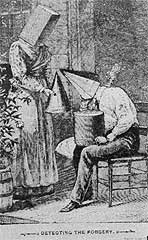
7.2 F is for Forgery I would like to present a hypothetical situation concerning a hypothetical artist and 'his career' for the purpose of invoking questions concerning the capacity of criticism to identify whether an art work is 'genuine' (thereby valued) or 'fraudulent' (thereby a product of misrepresentation). This example is actually not that far-fetched (but it is not meant to reflect specifically on any one individual). My example reads: a potential artist discovers the medium of holography on the basis of some pieces that he has seen in an exhibition. The artist is inspired to create some works within the medium. Shortly thereafter, he hustles some money, purchases equipment and technical textbooks, takes a course or two in technique, reads up on what is happening in the arts, who is doing what, reviews a bit of art history, and then produces some objects or scenes which he attempts to make holograms of. His poor results suggest to him that he should take his objects and scenes to a holographic lab where (for a small fortune) the objects and scenes are holographically reproduced in a variety of forms: laser transmission, reflection, white light transmission, integral, dichromate reflection, pulsed transmission and pulsed imageplane reflection. Our hypothetical artist is still dissatisfied: he wants it bigger, brighter, more complex, and after another session at the drawing board, and after pouring over more art history and issues of "Holosphere", and more dollars, he returns to the lab and finally obtains a series of 'state of the art' large format holograms, which by now feature complex colour work and even come with pre-fabricated installation packages! His career takes off like a rocket! There is even a write up in "Holosphere" and numerous invitations to international exhibitions! f is for fame! And then...someone else comes along, gets inspired by his work, steals his 'ideas', and mass produces them in embossed form for the cover of journals, for stickers, for corn flakes give-aways. Now the artist screams bloody murder. F is for forgery! The questions to you, the art critic, are: is the original artist committing forgery, or is only the second one guilty? What is the nature of their respective aesthetic labors? What are the inventions and the production of a new type of awareness 'about the world'? Are there other influences, 'already made' that we have overlooked? What signature(s) should be on the art work? Everyone? Or no one? Who made up the image idea in the first place? Is there a history? Does the work reflect on it? Does it matter? If not, are we critics content to let this one slide by and perhaps refer only to that work which excites us "personally"? Besides, if it is good, or seems to be "exciting", do these critical questions really matter? (You be the judge.) |
Some examples in holo arts?
Examples of a hologram 'pyramid', first from 1970's Visual Alchemy (C. MacTavish, A. Razutis) and to include models used;
and below this, example of Jason Sapan showing virtually identical pyramid in his shop Holographic Studios in NYC and implying authorship as if it was 'his'... (yes, it's a great demo item!)

More on NYC Holographic Studios 'The Case of Jason Sapan - Invented world'
------------- Page Top -------------
3.0 When is a holo shop a fine art gallery?

Holos Gallery San Francisco (in the trendy Haight district) was an example of a shop selling curious, which in this era (of 1980 and onward) were novelties called 'holograms' (mostly trading on the 'illusions of 3D objects framed in glass'). These items and their quality and content were undiferrentiated, except for price and the owner's personal relationships with Bay Area holographers who have branched out into display holograms with wall-mounted 'gallery type' works in hand. At that point (of 'exhibitions') it was announced to be a 'fine arts gallery' showing works of 'fine art'. This gallery didn't survive long, was purchased then converted to a 'on line gallery' with only a few items represented.
Holos Gallery Official History as written by Gary Zellerback for the web.
Holographic Studios New York City was an example of shop selling holograms as curios, also founded in the late 1970's, also containing undifferentiated art spanning holo kitsch to limited editions. This was also a consistent souce of 'multiplex holograms' from the original shop Multiplex Company San Francisco. This studio continues to this day and is the subject of a complete section 'The Case of Jason Sapan - Invented World'
Let us remember that galleries and exhibitions like Holos Gallery and the show that I reviewed (above) occured after the 1970's NYC shows had been trashed in the press for showing kitsch as art.
The question is not 'Are all generic objects kitsch?' but 'What is the purpose of including generic objects in one's holographic scenes?'. A scientist may use a generic object as a 'placeholder' in an experiment (let's say to determine coherence properties of the laser by holographic means). An assemblage artist may use generic objects in the 'assembly of a narrative' which is a known and practiced style of art throughout history. A novice, wanting to get noticed, however may reach for the first 'thing' they can grab to make their 'hologram', and to make sure it is 'bright' and 'clean' then sell it in a 'gallery' to tourists who are on the look out for 'novelty art', not fine art, even if the gallery can't tell the difference or won't explain. Let's keep that in mind when evaluating whether holographic works are kitsch, art, display, novelties, or simply junk impersonating content and quality.
PHOTOS: Zellerbach's Holos (San Francisco), Royal Holographic Art Gallery (Victoria, Canada), and Jason Sapan's Holographic Studios (New York City) all selling similar stuff:

Fast-forward to September 2020 and FaceBook 'Holography' where Gary Zellerback (Holos Gallery) continues in his sales and praise of same brand of work on Face Book and the web, as in the 1980's. Same group, now 35 years later...
At this time, I think it is clear that the definitions, standards pertaining to kitsch still remain 'up in the air', subject to the laws of persuasion and propagation, and product advertising.
I think it is also clear that 'holo kitsch' outsells 'holo fine art' in terms of volume, numbers, and profit to the sellers. That's why it will always be with us, not against us in the arts. (A.R.)
------------- Page Top -------------
4.0 Artist's reputation, and false representations on the web
"Faking the resume" and other misadventures on the web. Holography making claims to 'Fine Art'. Why is fact-checking now obligatory?
1. Bruce Nauman and Conductron (USA) did not have to fake anything. Nauman was a big name artist with a solid reputation. Conductron was a reputable company also with a name. Both were experimenting in the late 1960's with a primitive ruby laser system, 'trying some things out', seeing what they could call 'holographic art' or at least make it interesting. As I commented before in my essays:
"The first holo art genre that comes to mind is 'artist as holographer', or an artist who stumbled on, discovered or was invited to holography, but didn't participate in inventing anything. We can start with artist Bruce Nauman 'making faces' at Conductron Corporation in 1968 and then see what happened in the 70's, 80's, and finally arrive back at where we started from. 'Believe me, there is a lesson here!'" -- Al Razutis

"Mr. Nauman was invited in 1968 by Conductron execs to 'make holograms' in pursuit of their declared interests to provide something more 'interesting', more 'artistic' in an otherwise boring lab image generating system. They wanted to 'sell holography', sell the technology, sellthe use of holograms in displays and they wanted to position themselves as the leaders of the pack. They even wanted to 'make holographic motion-pictures at Conductron!' This history is amply documented in Sean Johnston's 'Holographic Visions' book and needs not detailed examination here.
"Here, in Mr. Nauman's series 'Making Faces' not only were the holograms exhibited (and continue to be exhibited) in galleries in NYC, but 'studies' and graphic photo reproductions in 'yellow' of his lips making faces ("Studies for Holograms") were exhibited, collected and sold for 'big money'. This is the business of holographic art." -- Al Razutis

(Nauman quotes from the essay Art and Holography - Part 3 by Al Razutis 2020.
---------------------------------------
'Being Dali'
'Being Dali is not easy - everyone wants a piece of you'. (AR)
2. Salvador Dali didn't fake anything, but those trying to 'cash in on the old man's reputation' got to fake the rest. Even in death one isn't safe from all those 'diggings'. In 1970 Dali was in declining health, nearing the end of his career. However, he was determined to continue is work in 3D (see Dali Stereoscopic 3D Paintings ) and explore the new medium of holography. And for this he traveled to New York City and engaged in a new line of works to include 'Dali multiplex holograms', his last holograms, one of 'Alice Cooper's Brain' and one of Dali re-enacting a previous stereo 3D painting, now for holography, titled 'Dali Painting Gala'.
To assess the value of these holographic orks, we need to understand how they were made and by who.
'First Cylindric Chromo-Hologram Portrait of Alice Cooper's Brain' by Salvador Dali (1973)
with Selwyn Lissack, filmed by Russell Beal -- hologram by Lloyd Cross

You Tube clip of 'First Cylindric Chromo-Hologram Portrait of Alice Cooper's Brain' by Dali'
2 sections only - by XAR3D (Al Razutis) 2020
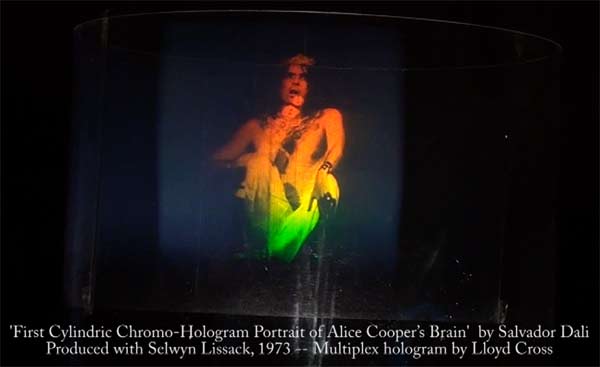
McCormack Collection & Archives copies -- two 'sections' from this classic 1973 hologram by Dali & Lissack & Cross.
'How Lloyd Cross, inventor of multiplex holography, described the start of this production':
"
... in the winter of 1972 Selwyn Lissack who came here and saw our Multiplex 'Lialiana', the multiplex hologram of Leslie and took it back to New York with him on the basis of a little tiny postage stamp hologram sold Salvador Dali a whole expensive program to make a twelve inch high, twenty four inch diameter 360 degree multiplex of Alice Cooper for one of their promotional campaigns... and in over a perdiod of thirty days with literally a telephone call every day, we finally got the filming done in New York in 16 millimeter film and Selwyn brought it out here (to San Francisco) in 1973, I think around February. And that of course sparked the beginning of the Mark II printer. We now had a customer for one of these holograms."
-- Lloyd Cross, inventor of multiplex (integral) holography
( as cited in pages 9 & 10, 'Story of Multiplex' )
In other words, the 'multiplex hologram and printer idea' had been invented by Lloyd Cross, and they needed a customer, and got one in Salvador Dali.
And the first Dali multiplex integral hologram was called a 'chronogram'?
"The first integral holograms were called cronograms by the people shooting them at the School of Holography in San Francisco. Lloyd arrived (in April 1973, at the Bio Medical Conference in NYC with a self-portrait, a group shot of him with his co-workers, individual portraits, dancers, and the first 360-debree x-ray (multiplex hologram)." --- Linda Lane, 'Laser Lady Meets the Light Junkies', page 76 -- see the cover graphic below for Amazon link.
An art work by Dali comes with spectacle and publicity!
What the press said about that day in New York, April 1973 when Dali met Alice Cooper:
'Alice Cooper Remembers His Encounter With Salvador Dali'
PHOTOS: 'When Alice Cooper Met Salvador Dali in New York, 1973' (pictorial)
SHORT VIDEO of the 'scene': 'When Alice Cooper Met Salvador Dali in New York, 1973' (You Tube VIDEO)
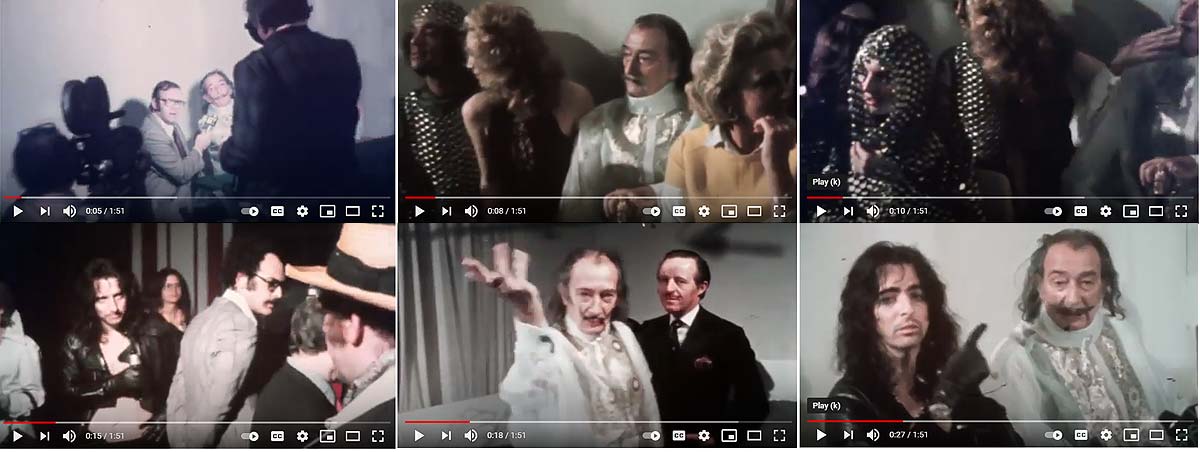
|
Read what Linda Lane said about this fortuitous opportunity for Lloyd Cross and company to make it big with 'multiplex holography', and how Cross blew it... February, 1973 "Suddenly the phone started ringing. It was 10:30 and huddled in candlelit darkness we looked at each other wondering who'd managed to get through. Lloyd answered and listened. He kept blinking and nodding his head affirmatively, until, in his soft-spoken way he said Yeah... sure, it's possible. I designed the whole system in my mind.. when I was in New Mexico. But I need five hundred dollars to turn the power back on. I can't do anything without power. When Lloyd hung up his face was a beacon of joy and relief. "Salvador Dali wanted to make a hologram of Alice Cooper from movie film. The 16mm film would be shot in New York and processed in San Francisco. If his invention worked, if a multiplex laser camera, the Mark II printer, could turn ordinary motion picture film into a three-dimensional floating, moving image, Lloyd and his rainbow's end associates would have pioneered a viable commercial venue."
------------------- "They had thirty days to shoot the Alice Cooper footage and forty-five days to turn it into a hologram that would be unveiled at the Knoedler Gallery in Manhattan. "Few people, if any, could make an integral hologram in this short timeframe. The task entailed shooting the film in a specifically calibrated circular format and then shooting a holographic film from the original footage. In order to see the 3-D result, the image had to be reconstructed using a laser whose beam had been spread through the lens and positioned at an exact angle. Only a rogue genius physicist such as Lloyd Cross would be up for this challenge."
------------------- (at a later dinner) "Greenberg started to squirm. Lloyd told him that his creation of Alice Cooper was the lowest of the low and he didn't know if he even wanted to be connected with it. "Was Lloyd Crazy?! He was killing the deal. I couldn't stay silent on the sidelines. "'If he could promote Alice,' I blurted, 'he could promote anybody!'
"
-------------------- (post hologram unveiling) "Lloyd Cross, genius holographer, inventor of integral holography, was supposed to come back to N.Y.C. for a major press conference. He was several weeks late. It was Alice Cooper's manager who was putting up the money to launch integral holography. Lloyd didn't like the idea of a snake charmer sponsoring his pet project. And, ultimately, Lloyd blew the whole thing." -- Linda Lane, Laser Lady Meets the Light Junkies, pg.81 |
Many of the facts recited here would not be known or published for decades
So, who are the people who made this hologram? What is the proof of its creation?
The provable facts are that the Alice Cooper 'Brain' hologram was created under the direction of Salvador Dali, executive produced by Alice Cooper's manager Joe Greenberg, who put up the money, co-produced by Selwyn Lissack who set up the shoots, as well as co-produced by Lloyd Cross who handled the holography and final creation of the holograms. The turntable film was filmed in NYC by Russell Beal, as confirmed in numerous accounts, and by Lissack himself in interview with Linda Law in 2021. (I use the term 'produced' and 'producer' in the usual film industry sense as to what producers do in productions. If someone claims to do 'everything', they better be prepared to prove it.)
Who was the cinematographer for the Dali first multiplex hologram?
Answer: "
Russell Beal was the cinematorapher who shot the 16mm film used for the multiplex hologram shoot, as confirmed by the following:
"Sometime in late 1972, or early '73, I was approached by a South African artist whose name was, I believe, Joffe. (HANS: I am sure this was Selwyn Lissack since he was from South Africa, and may have been called 'Joffe'). He claimed that he'd spent about a year trying to put together a project involving holography and Salvador Dali, and that Dali had finally acquiesced. How Alice Cooper came into the picture, I don't know, but Joffe told me that he, personally, had to finance the project, and he had very little money to work with." ---
2021 email from Hans Bjelkhagen citing Jody Burns in a previous conversation.
The facts are that the Alice Cooper 'Brain' hologram was created under the direction of Salvador Dali, executive produced by Alice Cooper's manager Joe Greenberg, who put up the money, co-produced by Selwyn Lissack who set up the shoots, as well as co-produced by Lloyd Cross who handled the holography and final creation of the holograms. The turntable film was filmed by Russell Beal, as confirmed by the above account. (I use the term 'produced' and 'producer' in the usual film industry sense as to what producers do in productions. If someone claims to do 'everything', they better be prepared to prove it.)
Additionally, NY cinematographer Hart Perry recorded a number of test shoots with Alice Cooper and Dali done independently. Perry claims he was originally hired by Greenberg to shoot this Alice Cooper hologram, but Selwyn Lissack (who was in at the beginning on this ) went with another guy (Russell Beal -- see above) and sent those results to Lloyd Cross for transformation (optical printing) into a 'multiplex-integral hologram'. What Perry has posted on the internet (You Tube and Vimeo are films and videos showing his involvement with aspects of the project, but no film or video of the actual material that was used (as film) for printing into a multiplex hologram by Lloyd Cross or associates is in these You Tube and Vimeo videos.
Film tests by Hart Perry of Alice Cooper and Dali (not used in hologram) - link to video
'Film Clips of Dali, and Alice Cooper for multiplexing' -- by Hart Perry
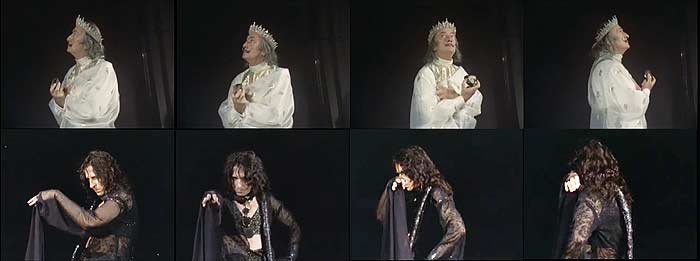
Who made this hologram and who designed and built the holo technology for making it?
The following facts are provided by Linda Law, Director of Holocenter, NYC in an e-mail conversation with me on 11/9/2020:
"I just had a call with Selwyn. It turns out that Hart (Perry) wasn't the cameraman for the Alice Cooper holo, he was filming for Alice and crashed Selwyn's shoot. Another cameraman shot it. However, he did hire Hart to shoot the Multiplex with Dali and Gala but Selwyn has the film footage. The holograms were made by Lloyd (Cross), Hart had no part in that. Selwyn was there with Lloyd when Lloyd built the first printer and they shot a proof of concept on that first printer which Selwyn took back to Dali in NY. With Dali's approval, he went back to San Francisco and was there with Lloyd when he built the second printer with the liquid lenses which was used to make the final Alice hologram. It may have been the first hologram made on that system."
This 'Alice Cooper's Brain' Dali multiplex hologram and the 'Dali Painting Gala' multiplex hologram (next section) was 'produced' (made) by Lloyd Cross in his workshop in San Francisco School of Holography -- this cannot be disputed by any reasonable person. It was Cross who also invented the multiplex printer technology in the process of making this hologram, and that should be recorded for history accounts to keep the record clean, not cluttered with impostors. (AR)
A living source with first-hand look at these matters is Linda Lane, whose very entertaining book 'Laser Lady Meets the Light Junkies - a Hollywood Memoir contains rare details and insights into how these inventions (1972-1975) occurred - link to Amazon com page for it:
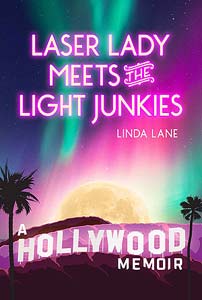
Another living eye-witness to these Dali hologram projects is Lon Moore, whose conclusions about what the west-coast people thought of this project are contained in this conversation.
----------------------------------------
A valuable resource concerning Dali and his work in stereoscopic 3D and then holography is contained in this 2021 essay I wrote:
'3D or not 3d? Dalinian Stereo and Holographic Space'

----------------------------------------
'Dali Painting Gala' - The final hologram by Dali and Lloyd Cross
'Dali Painting Gala' by Salvador Dali (1976) , produced with Selwyn Lissack, filmed by Hart Perry - hologram by Lloyd Cross

'Dali Painting Gala' by Salvador Dali (Salvador Dali, Selwyn Lissack, Lloyd Cross) 1976
Multiplex hologram by Lloyd Cross -- SMC&A collection copies - 360 degree integral - video:
View 2 min. video - 'Dali Painting Gala' multiplex hologram on You Tube narrated by A.R. 2020
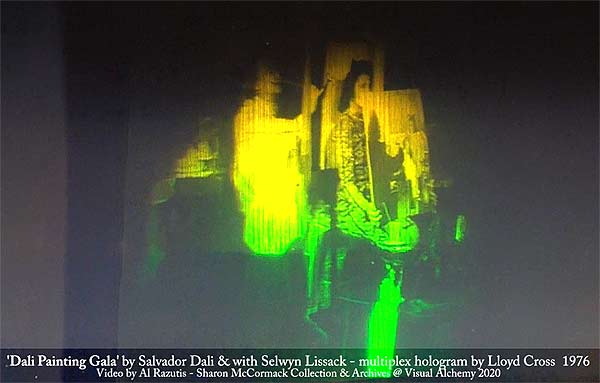
Producer's eye-view retelling the holo story with embellishments:
Selwyn Lissack, is credited here as one of the producers of this hologram, and tells the story of this work and its design thusly in his book 'Dali in Holographic Space':
"Dali centered the hologram on an earlier work of a stereo optic image which he has painted of himself and Gala, from the back. The painting is externalized by six virtual corneas, reflected in six real mirrors, immortalizing Dali and Gala in three dimensional space. ( ... ) Dali wanted to be included in the hologram. The couple sat in the center of the turntable with this array of objects placed strategically around them. ( ... ) To give more dimensionality to the scene, Dali created the illusion of a cup and saucer floating in space in front of Gala." -- Dali in Holographic Space, Lissack
No such cup and saucer appear in the hologram 'floating in space'. Mr. Lissack is now adding elements to the story not based on facts. Further, in his book and chapter on the subject, Lissack omits any mention of the cinematographer (Hart Perry) who shot the film of the set on the turntable with Gala and Dali, for the printing of the hologram by Lloyd Cross.
Is there a video record of the shoot itself?
The only video record available documents the preparations for shooting this hologram on a turntable, on film, prior to the actual shoot, prior to further completion as a multiplex (integral) hologram. This video was hastily shot by an associate of Hart Perry (who along with Dali and Lissack are preparing for the shoot):
https://vimeo.com/376223999
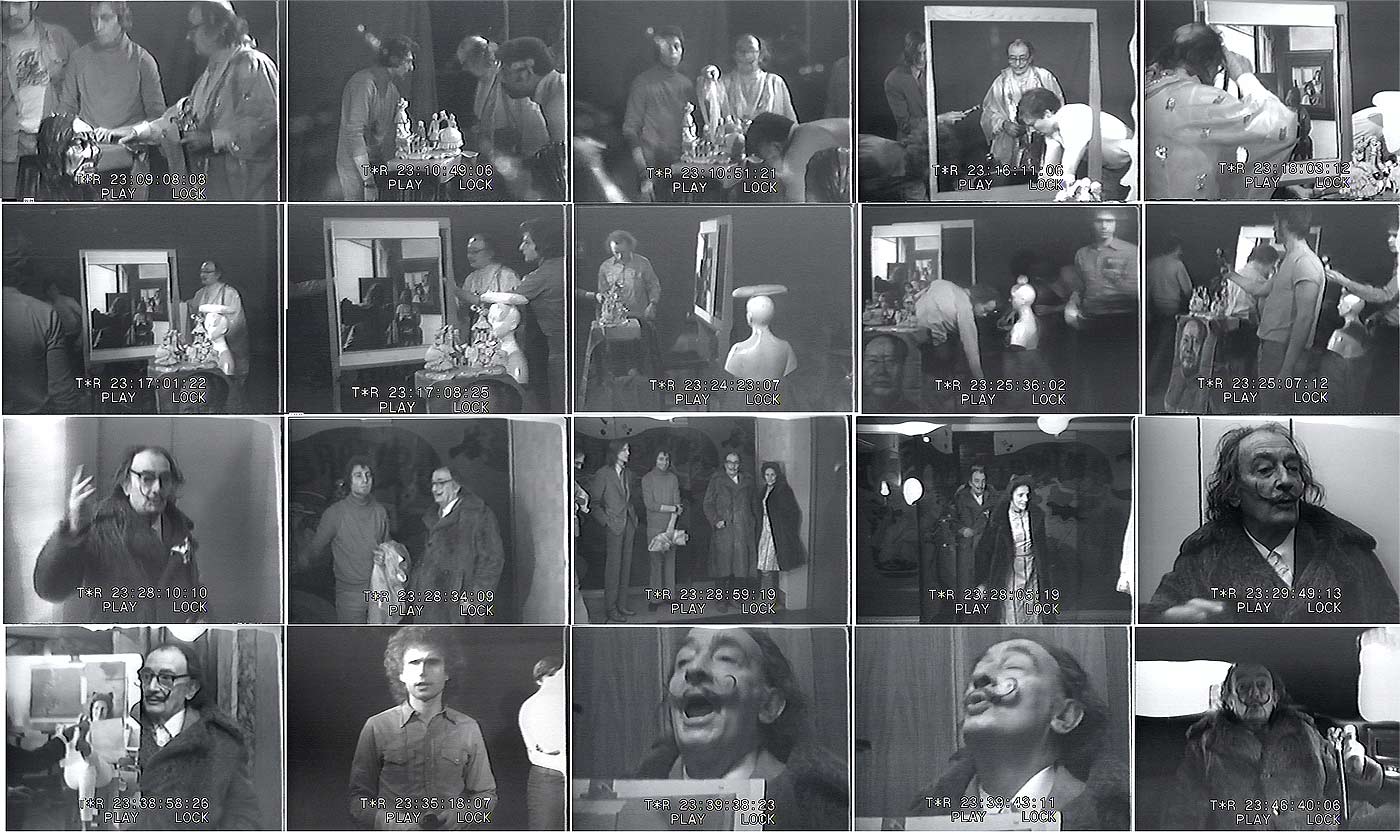
Enlarged picture in separate window
Additional materials from a related page / section: 'Dali Painting Gala' - multiplex hologram
A comparison of subject matter and interpretations of the same title:
The two main limitations of these white-light multiplex (integral) holograms of the 1970's were: there is no vertical parallax in the scene, only a horizontal parallax, meaning you can't 'look over and under' the objects in the scene, only horizontal parallax exists. Meaning, it isn't 'true 3D'... Furthermore, the image is mostly 'transparent' (as it is a transmission hologram) and when one attempts to view it from another angle (height) it changes colors (!), which can be annoying for someone trying to see it in 'full three dimensions', and not a 'stereo 3D look'.
My (essay author's) comment on this second Dali multiplex is also for the record: "Mr. Lissack mis-states (in his book and SPIE paper) the meaning and the composition of the hologram as regarding Dali's painting of the same name, Lissack mis-states that the hologram reproduces the 'pallet' of the painting or the 3D of the original stereo paintings -- see 'Dali Painting Gala' for comparisons. Is this important? It's one of the details that Lissack 'never gets right'. Furthermore, the multiplex hologram features the painting as a 'prop' in an otherwise cluttered composition, where Dali is seen in the midst of a clutter of objects and busts and is seen painting a seated Gala from the back and through a canvas. And she's holding a picture of the painting by Dali of the same name, not a 'mirror'. What that has to do with 'holographic space' is anyone's guess, except the obvious that this is a hologram of a 'space'. Few of these ideas of Dali, or his experimentaton with 'Dalinian Space' ever were realized in the resultant multiplex holograms that were produced.
The failures in each case can be attributed to the lack of experience, competence on the part of Lissack who organized the shoots, and then had the film printed by Lloyd Cross' new multiplex printer. Upon completion, the installations, the compositions and final versions all resemble the other motion-picture multiplex scenes that were produced in the 1970's featuring a miniaturized rotating subject / character 'suspended in the center of the cylinder'. There is no further 'interpretation' or 'synthesis' of space, only a mimetic reproduction of the scene that was assembled for the shoot. It is my conclusion that this (Lissack) version of 'holographic space' cannot be called 'Dalinian Space' and that Dali's work in holography was partially unsuccessful, incomplete, as these cylinder holograms show." (A. Razutis)
See the section on Dali's stereoscopic paintings in a separate essay 'Dali Painting Gala' for more insights into Dali's use of 3D.
See the section on Dali's stereoscopic paintings in a separate essay 'Dali Painting Gala'
MORE RESOURCE PAGES on the subjects of Dali multiplex holograms:
'Dali Holograms in the Sharon McCormack Archives'
'Multiplex hologram technology - what are they? How are they made?'

-------------------------------------
Mythmaking with Sel -- 'Dali for Dollars'
Selwyn Lissack appears to mis-state some of his accomplishments on his own web page http://www.dalihologram.com/aboutsel.html as my September 2020 visit discovered. That's my conclusion after being unable to find any evidence that supports his many claims of 'creation of the first holographic multiplex camera' (which was created by Lloyd Cross, not Lissack), or other details not necessary to recount here."Hey, that's to be expected!", some will offer in excuse.
Excuse all you want, but one thing must be clarified front and center: Lissack is not the one who 'built' or 'funded' the holograms or the hologram printer exclusively. The funds were provided by the Alice Cooper rock group and manager Joe Greenberg who also became interested in funding the San Francisco 'multiplex group' of Lloyd Cross. What happened here is documented elsewhere on this page in a book by Linda Lane.
Beyond questions of advertising there are questions of legitimacy
The following short excerpt of a July 2021 post by A.R. on Facebook:
|
"To ignore or not to ignore,
----------------------------------------- But not this guy. Selwyn's Dali, or "The Sewage Treatment Plant" by AR The pronouncement and promise reads: "The magic of Dali... hologram representing the universe" In a chapter titled "Holographic projection of consciousness" (pg. 80, Dali in Holographic Space by Lissack and Lissack) Selwyn Lissack describes how ""Magically, Dali also shows us that a hologram is a holographic replication of our own universe. Working on the cutting edge of technology, where art and spirituality boldly ventured into scientific space, the Dali holograms would forever mark a time in history, when science and art came together to create a holographic visualization that was as real as reality itself." What a load of crap penned by Selwyn and Linda! Let's dissect it, shall we? How do you 'project consciousness' and what does it have to do with holography? You mean you project a hologram of it? You mean consciousness is somehow holographic? Can it be projected as if it was an image? What? What does that mean? You simply say it, declare it? And voila!? How can a hologram be a 'holographic replication of our own universe' unless you say three times 'it is what it is' and think that a hologram of the universe is somehow possible. I mean, the universe is everything, so how are you going to make a hologram of everything? Are you saying that everything is everthing now? Can someone explain to us how the 'Dali holograms', which were actually made by others, technicians, not Dali or Lissack, could create a "holographic visualization" (meaning, the holographic image when the hologram is properly illuminated) that was "as real as reality itself."? Is that more of 'it is what it is'? Or 'everything is everything'? It doesn't make anyone popular to question authority contained in sales pitches. In some circles it is considered as really bad form. So, here's a salesman from South Africa for you! He likely never heard of Dali's stereoscopic 3D paintings, years of them, because without the salesman there is no story, a story that it was he, only he, that introduced Dali to 3d... To read more of this story, continue reading. ------------------------------------ Self published books like this 'Dali in Holographic Space', published by Lissack and Lissack on Amazon, the distributor, with no date on it, 'Edited by Louis Brill' but full of erorrs, isn't the end of the story. Web sites about holography which make mysto claims for their creators are too numerous to cite here. But knowing how this works is essential. Mr. Lissack even managed to get his dubious claims 'given a stamp of science' when his paper was accepted and published by SPIE, normally a serious scientific society. And it was that bit of 'credibility' that allowed him to sell his story on the auction block for hundreds of thousands, that is dollars, not likes, because Dali for dollars is what was going on here. And of course, the 'holo scene' just looked on, looked the other way, and some snickered. 'And so what' some said. 'It's all about money anyways, nothing to do with truth or beauty'. -------------------------------- (commentary continuing) Any scientific organization like SPIE, an org with a track record investigating holography, that allows the following to be "presented as a paper", without vetting, without peer revue, hell without so much as a peep from the holo community... has dropped the ball badly. Here are two sample problematic (ridiculous) statements by Lissack in his SPIE paper "Dali in Hologrpahic Space" https://spie.org/news/spie-professional-magazine-archive/2014-january/dali-in-holographic-space which begins like this: "To understand the dynamics of Salvador Dali’s great achievements in holography, which led to the n-dimensional moment of rock star Alice Cooper’s brain floating in a volumetric holographic space, hearken back to the 1940s when the idea of coherent interference came to be." That nonsense and misrepresentation is followed later on by: "Dali’s contributions to art holography were monumental. His talents and forward-thinking mind were so far ahead of the technology that the artwork he applied in creating the holograms would be exactly the same today. The Dali holographic masters can be compared to currency plates; they transcend time and they never change. What does change, with evolving technology, is the playback system." -- and this was presented at a 2014 SPIE session. Shame on those who say nothing or profit from this. -- A.R. July 2021 |
Certainly we're not strictly concerned with the distant past but 'how did we get here' (the chain of events) where a purported 'Dali hologram' these days sold for 269,000 USD recently. 'Created by Lissack'. No other credits to anyone on the auction page, Lissack's book, Lissack's SPIE paper in the making of it. That certainly must mean that the auctioneer, buyers, SPIE, and others all bought into this...?

What Selwyn Lissack, who acted as co-producer along with Dali on the 'Dali multiplex (integral) holograms' wrote about these holograms is in his book "Dali in Holographic Space" (Editor: Louis Brill), published by Amazon and undated (my copy is).
What I wrote in my review for Amazon, the publisher / seller:
"
This book is badly written, full of incorrect or invented 'facts' concerning this collaboration and subsequent making of holograms by Dali. It resorts to a false mystification of 'holographic space', and Dali's interests, is an attempt by Lissack to increase the value of his rather mundane and inconsequential works and career in holography. The book does not give any credit to the collaborators or holographers involved in the multiplex holograms described here, and represents such a blatant act of self-promotion by Lissack that it does not merit any status as historical or even a honest biography. Sorry, the facts offered in the book don't check out with all the other sources on these works out there. Only a few sycophants will gush about this work, as is evident here."
Amazon declined to publish this. They contended it 'violated their community standards'. Figures, because their 'standards' are to promote sell sell Sel...
I summarize some of my objections which pertain to errors of omission like these:
There is no mention of Hart Perry by Selwyn Lissack in the making of any of these holograms.
There is no mention of Lloyd Cross in the making of the multiplex holograms.
There is no mention of Ron Olson the guy who actually made the 'melting clock' hologram for Selwyn.
Actually, there is no mention of anyone else making any of these holograms.
"ALL credits in Lissack's book are 'by Selwyn Lissack', all 'conversations with Dali' are strictly based on Lissack's recollections, not recordings. If that's all there is but his anecdotal evidence, then the authority has to be confirmed elsewhere." (AR)
UPDATE: Previous sections quoting 'fans of Lissack and book' have been removed by me from this essay as a favor to the reader. No need to advertise those who should and will be forgotten.
However, these comments by contemporaries in holography need to remain:
-- Annoyed onlooker and pioneer SF holographer Lon Moore disses the holos by 'Sel' on a Face Book 'Holography Group' post and thread, but at least he was there in SF and Multiplex in those early 1970's to see it directly. Here is an excerpt from a 2020 FaceBook 'Holography' group post:
Lon Moore: Dali may have been the most famous, but those multiplexes were comically bad. We had quite a few laughs about them at the time. That probably didn't get into Selwyn's book either.
Hans Bjelkhagen: The value of an art piece depends mainly on who has created and signed it.
( ... )
Lon Moore: One more thought on this... If Lloyd had written the book, Selwyn et al would have been mentioned as the sales guys and promoters that brought home the Dali bacon, thus allowing us to execute the technical feat that put Multiplex on the map. Personally, my feeling is that the real creativity in this project came from the technical end... In fact, there is no doubt in my mind about that.
"
---------------------------------
The latest 'Dali Hologram' - the importance of 'story' for dollars
To sell anything called 'art' these days requires a 'good story'... the bigger the whopper, the better.
Selwyn Lissack claimed to have succeeded in 'concluding a project by Dali' (as he and no one else describes it), provided some sketches, wrote a testimonial about it for the web, and even delivered a 'paper to SPIE' on the subject ( link: 'Dali in Holographic Space' ).
Many of the details of this story are unverifiable beyond Mr. Lissack's account of them. This hologram was made by a commercial holographer Ron Olson, at Laser Reflections Las Vegas in 2003, not made by Lissack. By all appearances this image-plane reflection hologram is made in a typical style where transmission masters are turned into (typically green) reflection holograms. I have worked with Mr. Olson previously on a project of mine in 2007 and can attest to the quality and limitations of his set up and experience.
This hologram is notable for being one of the highest priced sales for the holographic art market to date (that I am aware of). It is notable because it was sold at auction for 269,000 dollars, thereby confirming the need for a 'a good (unverified) story' which is based on a private conversation between Dali and Lissack in a hotel room 30 years before, as recounted by Lissack in his 2014 book. .
Selwyn tells the 'story' and rationale for this hologram's creation from his SPIE paper, and book -- I underline that which is questionable to me:
"Dali was a true visionary, creating holograms that would transcend time. The Melting Clock was a natural progression of Dali's work in holography as well as an ongoing exploration of time and space. Conceived in 1976 and produced in 2003, this 18- by 24-inch silver-halide reflection hologram is a concept in recycled molecules of a moment in time conceived in the past. Dali's Melting Clock hologram could not be constructed in his lifetime because the lighting system used for playback was too hot. The project was reproduced with 21st century technology after his death, in homage to his genius and ability to see beyond the limits of time. He entrusted the blueprint to me before he died in 1989 to complete the project when the technology to create it was available. I was finally able to honor my promise to him with the assistance of a modern holographic lab, Laser Reflections, and a pulsed green ytterbium fiber laser. "
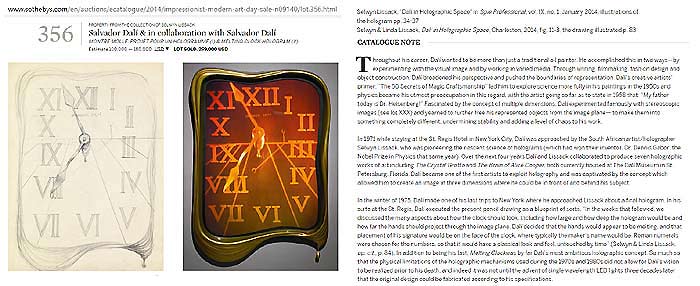
Selling price: $269,000 U.S.D.
Selwyin Lissack as quoted in Sotheby's auction catalog: "In addition to being his last, 'Melting Clock' was by far Dalí’s most ambitious holographic concept. So much so that the physical limitations of the holographic mechanisms used during the 1970s and 1980s did not allow for Dalí’s vision to be realized prior to his death, and indeed it was not until the advent of single wavelength LED lights three decades later that the original design could be fabricated according to his specifications."
Here's my problem with Selwyn's story: that's an inexcusable delay and it's not based on facts then or now. Another problem with this entire story is that this holographic 'melting clock' of 2003 bears little resemblance to Dali's melting clocks of of the 1970s or earlier. A good overview of Dali's conceptions about time and melting clocks is contained in my essay and Dali's Melting Clocks
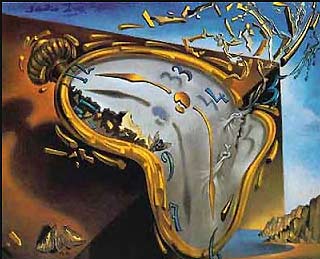
A direct comparison in hologram quality of white-light reflection image-plane holograms of the Dali can be made with the work of Lon Moore, which was contemporary to Dali's time in holography but working in San Francisco on the west-coast. A sample of Moore's work can be shown in a panel of his holograms. A link to Moore's works on this page above is HERE and this is a selection that proves my point.
1970's white-light holograms by Lon Moore

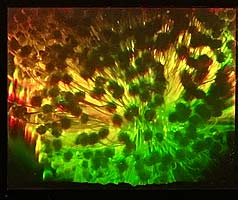







'What about those single-frequency LEDs necessary for the hologram that Selwyn Lissack refers to in 1975?
"I explained to Dali, that he had reached the limitations of current holographic technology for his composition and it would take many years before a suitable single wavelength LED play back system was developed." --- Selwyn Lissack, pg 85, 'Dali in Holographic Space'.
While the LED light was not invented in the 1970's, it did not mark a major breakthrough for lighting white-light (or filtered light) image plane reflection holography. There is no 'single frequency LED' except that of a diode laser, which is useless for reflection image-plane holography. It became used in illumination, including reflection holograms in the 2000 era. The author (Razutis) first saw these colored LED's demonstrated by Ron Olson in Las Vegas, and he purhcased some of these lamps from him for tests. Their output is low, it is highly filtered light, and they don't represent much of an improvement over white-light LED or other white-light point source lamps. This issue is a red herring.
The other details (underlined) are also unsubstantiated claims which lack credibility. Further, Mr. Lissack's assertion of the "advent of single wavelength LED lights" is a mis-statement of narrow-band LED characteristics and appears to be 'borrowed' from Ron Olson the lab director who used these lights to enchance his holographic white-light reflection copies and images. Not 'single wavelength'. That description only fits a 'laser'.
Apparently, it takes another 'holographer' to know the difference and to call out aspects of stories which are not true.
For an extensive analysis by Razutis of stereoscopic 3D and holographic art by Dali visit the page: '3D or Not 3D? Dalinian Stereo and Holographic Space'

-------------------------------------------
'To close the book on this with some scandal!?'
If you want to get the 'stuff' on Dali, don't ask an artist, and certainly don't ask a 'holgrapher' about it. Ask a critic!
Critic Brian Sewell presents an excellent bio of Salvador Dali on YouTube - 48 min. video:
'Dirty Dali - A Private View' on You Tube

It has details about Dali and his work not usually found in art schools.
What happens to many artists happened to Dali:
"...(this) drove her (Gala) into the corrupt business of his (Dali's) last years..."
@ approximately 48 min. of the video this is stated:
"...the genuine signatures on paintings not even conceived by him (Dali)..."
"the genuine signatures on forgeries that she had unknown to Dali commissioned from imitators..."
"the genuine signatures on blank sheets of paper upon which fake prints would then appear..."
"such was the extent of this corruption that any Dali work after 1960 even with a specific guarantee of authorship must be the subject of some skepticism..."
-- Brian Sewell, 'Dirty Dali -- A Private View'
-------------------------------------------
Yes, the 'power of story', true or not, turned into 'Dali for Dollars!'. But the following examples become even more outrageous if you want to see how this game works.
Diamond Mines - value added by making it up
4. The subject is decades of Mark Diamond -- his web site containing many claims without substance, unfinished projects, false animation photo representations of holograms. Shameful misrepresentations of 'holography', 'vr', and 'full color motion-picture holograms' representing a career over decades without anyone calling this out, until the analysis appears here. One has to wonder, then, what it takes to 'wake up a holography scene' if misrepresentations going on for decades are never called into account.
In this particular case, a point by point rebuttal is required, because it is on the basis of mis-statement of facts that my objections to the contents and the effects (and placement in 'history' and 'valuation of holographic art') arise and are openly declared here. And it is because Mr. Diamond's false claims went unchallenged for decades, because the dominant 'holo scene' only thrives on 'who you know'.
All references below are to the following web-site contents as recorded in September, 2020 by the author: http://www.diamondimages.com/
The misrepresentations, lack of authentication or proof begins on the home page and is seen throughout this website touting Mr. Diamond as an expert where little expertise is to be seen in the examples provided.
(Click for enlargement of sample web pages in separate window.
- Mr. Diamond asserts that he makes "animated full colour holograms", but there are NO examples on his web site of any such results. The 'animation' he refers to are film clips of people (or subjects) on a 'turntable' (typically rotating) in the manner of making a film for further printing into a hologram via the 'multiplex hologram' method' perfected by Lloyd Cross. But there is no mention of Dr. Cross on this Diamond web site.
- It is less than honest for Mr. Diamond to claim the work is in 'full color' without definining what he means (by 'full') or showing any examples of his results, except for the inclusion of color photographs and videos (all in 2D) showing the subjects (for example, native indians in costume) 'rotating around a axis' (as if on a turntable). These shots are recorded by a standard motion picture camera, which is the proven way to make a 'rainbow' (not a full-color!) 'multiplex holographic stereogram' of the kind invented by Lloyd Cross and of the kind 'made by Mark Diamond'.
- Next panel right shows one of the inventors of white-lilght holography (Denisyuk) showering praise in a 'quote' on Mr. Diamond as being the maker of the epitome of 'holographic stereograms' (which were called 'multiplex' or 'integral'). Is this quote accurate? What is the source? There is not one single 'holographic stereogram' movie on this web site, there is no laboratory, technology to attest to Mr. Diamond's work. By placing this quote, Mr. Diamond implies that he makes such holograms directly (because he cites no other sources), an assertion directly contradicted by facts and the historical record (concerning such works and where they were created and with who). These sources are widely available, searchable. I need not provide every source / citation for the facts here.
- Moving right to the next panel, 'fine arts' holograms by Mr. Diamond are displayed in a paltry and small collection of artifacts whose sizes, media, or dates of creation are not stated, and whose 'artistic status' is simply a matter of Mr. Diamond's assertions. Just an assertion, not proven as a cultural fact.
- In the far right panel we see a number of film portraits of native indians, once again recorded on standard color film, and shown on the videos on the web site as such, and never shown as 'holograms'. There subjects are always shown on this web site as color photographs or color movies (in 2D), which pretend to be holograms.
What's in your wallet?
 Mr. Diamond's few holograms and his representations of them got my interest because they appear in other collections, for example in Gary Zellerbach - Holos Gallery price list where the work appears to be greatly valued (for 9K if signed by Mr. Diamond, for 18K dollars if signed by Dizzy Gallespie) for 'Dizzy Gillespie') - a multiplex hologram made by a lab in Southern California for Mr. Diamond. There Mr. Diamond is referred to (by Mr. Zellerbach) as "artist", and no further credit for the work is provided.
Mr. Diamond's few holograms and his representations of them got my interest because they appear in other collections, for example in Gary Zellerbach - Holos Gallery price list where the work appears to be greatly valued (for 9K if signed by Mr. Diamond, for 18K dollars if signed by Dizzy Gallespie) for 'Dizzy Gillespie') - a multiplex hologram made by a lab in Southern California for Mr. Diamond. There Mr. Diamond is referred to (by Mr. Zellerbach) as "artist", and no further credit for the work is provided.
This is how the 'holo art scene' has worked for years, decades, and why its current accreditation is in question and mostly ignored by the fine arts which are represented by curators, gallerists, critics and historians.
The web content by Mr. Diamond contains examples of what I call 'shameless misrepresetation' by people involved in the 'holography industry' (to include the holo arts) -- examples and claims for something that never existed, or they never made (but fake it with film or VFX graphics) or just outright misrepresentation of what we are looking at (e.g. a color photograph portrayed as a 'full color motion-picture hologram'. It tends to 'cheapen holography' in everyone's view.
In a 'truthful holographic culture' we would see 'peer review', like they have in the sciences, before statements are published as 'facts'. In the holographic arts culture people can make up anything, publish it, and without review these statements are accepted as facts and linger on the internet for decades, until they are cited as 'fact' by further publications. This fakery has to stop for this holographic arts culture to survive in the real world.
Let's look at some further examples from Mr. Diamond's web pages and compare them to facts or to other published works of a similar nature:
A movie of a scene is not a hologram, it is a movie!
By calling these 'holo portraits' of native american indians, which are depicted only as standard movies, a 'hologram' does eveyone a disservice, starting with the subjects, proceeding all the way to the casual web drop in looking for 'holography'. To understand better what 'motion-picture holograms' look like, and the technology used to creat them, visit the archives and some of the 'source': Sharon McCormack Archives - Multiplex Technology.
The following panel of frames is from Mark Diamond's web site purporting to show the 'full-color holographic movies' being made by him - they are photographs and 2D movie stills:

The following panel of frames is from Sharon McCormack Archives which depict in photos what a 'multiplex holographic movie' of a native American indian looks like. These works are attributed to her because she made these, shot them, printed them, documented them, they are in the archives, and the photography and 3D video documentation of them were performed by me, the author, so I can vouch for them.

There is no dispute as to which is the fake representation and which is authentic. Shame on those who perpetuate any confusion about this.
Did these native american film shoots by Mark Diamond turn into holograms at all?
"I never mastered the Native Americans we filmed in Washington D.C., Applied refused to do any work after their lab destroyed the film I gave them of Les and they mastered 9 more copies when I told them to stop after I saw the proof. It took years but I won in the end but was not able to make the stereograms there and then they closed the facilty. " --- Clayton Munsey, project co-producer, September 2020 interview.
One last example of web representation attention. Mr. Diamond contends the following on his web page ( http://www.diamondimages.com/bucky/bucky.html ):
"All acquisition materials, namely 35mm color cine elements have been stored under air conditioned, archival conditions for the past 2 decades. In the intervening years since the filming, and Bucky's passing, I visualize the Holo-portrait integrating several of Bucky's most famous inventions. These artifacts will appear animated in the space around his 3D head, as though manifestations of his thought forms materializing, then disappearing, while he impishly smiles all the while. With the discovery of the Carbon 60 molecule and it's posthumous nomenclature, BuckminsterFullerene or Bucky Balls, I will include a computer generated C-60 (Bucky Balls) molecule animating in the space around his head as mentioned above. Other elements will include the Dymaxion Air-Ocean Map, The Dymaxion Car, Geodesic Dome (being flown by a helicopter), the Rowing Needle (with Bucky actually rowing himself), and the Jitterbug (Vector Equilibrium System).
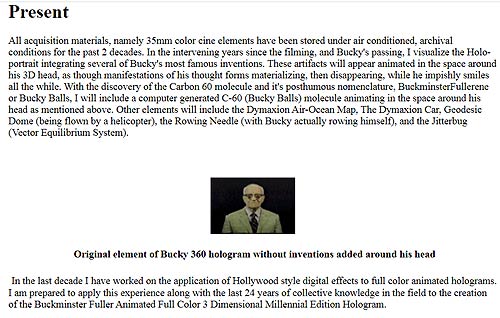
Original element of Bucky 360 hologram without inventions added around his head
In the last decade I have worked on the application of Hollywood style digital effects to full color animated holograms. I am prepared to apply this experience along with the last 24 years of collective knowledge in the field to the creation of the Buckminster Fuller Animated Full Color 3 Dimensional Millennial Edition Hologram."
This image (below) of a multiplex hologram of Buckminster Fuller is in the Sharon McCormack Archives. As collection curator I had posted it on the web page to include in her work. When I received an objection and request from Mark Diamon to 'remove it from the site' and a claim that it was 'his', I naturally complied without asking for proof or evidence of ownership. This is the way it usually goes in the holo scene, a matter of trusting. However, when I see what Mr. Diamond has written above on his own web site I have to leave myself questionins my decision, because what he says is directly contradicted by the existence of this Bucky Fuller multiplex hologram in Sharon McCormack's possession.
------------- Page Top -------------
5.0 Formal declarations - values of holographic art
1. Gary Zellerbach -- describes his Holos Gallery in very favorable terms claiming it was the 'first holographic fine arts gallery' and later the 'first on-line fine arts holographic gallery' in the USA. Whether this is a fact is unclear because the assertions are not substantiated. But on the on-line version there is not much to see. A limited number of works in the price list.
Rationale for prices at Holos
To this author the standards at Holos are quite out of place and bizarre, as in Zellerbach's valuation scheme based on 'how large is this hologram'...

'Selling Holographic Art:
An Analysis of Past, Present, and Future Markets' containing Zellerbach's published comments on his definitions of 'holographic art' (published in SPIE 1992: Presented at the Fourth International Symposium on Display Holography
Center for Photonic Studies, Lake Forest College, Lake Forest, Illinois
Published in Proceedings SPIE Vol. 1600). To quote from the beginning:
" Holographic Art Defined"
"
First, we must agree on a definition of what is 'holographic art.' As with most art, definitions can be arbitrary, and holography seems to be especially susceptible to the problem of defining where 'giftware' stops and 'art' begins. For the purposes of this discussion, however, some distinctions and definitions should be made, arbitrary though they may be. Thus, most works eight by ten inches or smaller in size, produced in unlimited editions, often by companies as opposed to individuals, and retailed at around or under US$100.00, will be considered 'giftware'. &nbosp; In contrast, works generally eight by ten inches or larger, sold in limited editions or as one-of-a-kind pieces, normally attributed to a single individual artist or perhaps a collaboration between artist and technician, and retailing at or above US$100.00 should in many cases be considered 'holographic art.' Artistic intent may also be considered: was the holographer attempting to make an artistic statement or was the holographer attempting to create an image strictly for commercial appeal and salability?
Of course, some larger works are definitely giftware, such as many mass produced 30x40cm film holograms, and some smaller works could be considered 'art,' for example the four by five inch three-color reflection holograms by Lon Moore. These types of exceptions are consistent, however, with a method of definition that relies primarily on attribution of the work to an artist (as opposed to the anonymous company name identification) and size, price, artistic intent, and rarity of the work. The judging of the aesthetic content of the piece is simply too subjective a criteria to be appropriate to this presentation. For example, is a representational image of a soup can fine art (ala Warhol and Oldenburg) or simply a technical accomplishment (difficult though it may be) of little or no artistic merit?
"
(The underline is my emphasis of the arbitrary standards of valuation employed here. The second paragraph is included to also show the arbitrary standards of applying the title 'artist' to anyone the gallery chooses to bestow it on.)
Two samples of pricing in various size / formats for : "Dizzy Gillespie hologram" -- left: as sold by Holos Gallery On-line (Gary Zellerback), and right: as sold by Amazon (Holo Brands) on their web site.

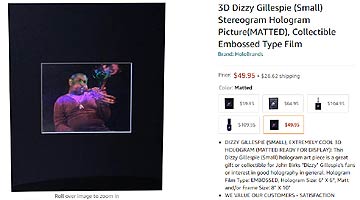
A current price list for what is termed 'holographic art' on the Holos web site is available from this page https://www.garyzellerbach.com/HGO/pricelst.html. Alternatively, it can be downloaded from my web site at Holos Gallery On Line Price List, current to September 2020.
-------------------------------------------2. Hans Bjelkhagen is a physicist who has worked extensively in display holography, with artists, with entrepreneurs and has published excellent books on the science of analog and digital holography. He is also an educator and active in the international community of holographers. His collection is a personal passion which he sells examples from as the interest arises. In the world of 'fine art holography', the prices in this collection are most modest. They range from 500 British Pounds to $3500 Pounds for each item.
What is notable about this price list is the presence of background information on the artists, details and background concerning some of the works.
What is also notable about this price list is the combination of 'display' and 'fine arts' works and artists, because this conflation of separate interests tends to blur the lines between them. The minimum difference between what we term 'display' holograms and 'fine arts holograms' is whether the works have been previously exhibited in a 'fine arts gallery' typically in an exhibition advertised as 'fine art'. This is a problem affecting the entire holographic arts and display market.
A downloadable 41 page PDF document containing the price list, photos and background info is available from this page http://www.hansholo.com/items-for-sale.html (click link 'Art Holograms for sale'). Alternatively, it can be downloaded from my web site at Hans Holo Art Prices.
Hans Bjelkhagen explained the following as his personal standard of valuation and selling price in response to my question to him:
"I have several holograms in my collection, my holograms recorded at Lasergruppen Holovision AB in Sweden, HOLICON in Chicago. USA and at OpTIC in Wales, UK. In addition I have art holograms by several artists, John Kaufman, Eduardo Kac. Melissa Crenshaw, Ed Wesly, Lon Moore, Rudie Berkhout, Anait, Setsuko Ishii, Dieter Jung, Carl Fredrik Reutersward, Larry Lireberman, Ron Ohlson, Hans Weil-Alveron, August Muth, Martin Richardson, Dominique Mulhem, and others.
I have old Russian and Bulgarian Denisyuk holograms, large amount of commercial embossed holograms, film holograms, books with holograms, children books with holograms, historic holograms, for example, from McDonnell Douglas, a hologram of the moon rocks, etc.
I am not forced to sell anything, but I have put a price on the holograms so that I am prepared to sell them for the price I have put on them. But I am equally happy to keep them.
The problem is so few art holograms are sold which makes it difficult to know what an art hologram is worth. Only with established artists such as Bruce Nauman and Carl Fredrik Reutersward one may have an idea. In regard to the Making Faces holograms two of them have sold for over $200000 in New York, I think.
I had one hologram by Margret Benyon, "Painted Margot" which was on display at our LightWave Hologram Gallery in Chicago. I did not want to sell that very nice and unusual art piece, but we put a price of $8000 on it so that it will not sell. Nevertheless a lawyer from Florida bought it for his office, so it is now gone. I remember that Margret Benyon asked for a letter to confirm it was sold for $8000 so that she can refer to that when selling her holograms. --- HANS" (cited in September 2020)
The principles at work here?
Prices set by Hans Bjelkhagen are based on precedent, meaning what has been bought and sold before, and 'inflation'. These are common acceptable practices in the world of fine arts and have been applied for millenia in the commerce of fine arts. This standard does however have some flaws or problems, namely if the precedents which have been set were done arbitrarily, without any regard for market, or subject to a gallerists or artists 'whim', or 'inflated sense of self-worth'. In the case of false promotion and false advertising (as I have shown in this essay to be a part of the holo culture) the precedent may be set by a 'con' of the buyer by the seller, then passed down the line as it is then accepted by others as precedent (but based on a previous, perhaps disguised or unknown 'con'). That's a problem.
------------------------------------
3. "Irridescence" at the HOLOCENTER New York City is an exhibition of holographic art, which is curated by Martina Mrongovius and funded by support from the Hologram Foundation established by Hugh Souparis. The work represented in exhibition is focused on white light transmission and reflection hologram methods and presentations using rainbow, achromat or image plane transfer to white-light illuminated exhibition copies. As their web page says: "Art holograms sculpt light."

'Irridescence' exhibition and Hologram Foudation information - PDF
http://holocenter.org/iridescence
Main Gallery Page & Prices:
https://www.iridescence-expo.org/
The collection of works catalog and price list is aided by a page on each artist -- I have found problems with some of the background information on artists presented here but understand that gallerists rely on artists to provide this background which is typically taken at face value or inflated for promotion purposes.
These works are listed for sale, in the high end of holographic art prices (for example, 2K to 20K Euros each) for public, non auction house fine art sales. They are well represented in layout and photography and details.
In my estimation, this exhibition and collection presents one of the 'cutting edge styles of holographic art and exhibitions', at least for this time period, and tailored for the general public, and the art gallery crowd. It is however limited in scope and aesthetics and represents a 'stable of artists' who are represented in academic writings, curating and grants given by the 'Holography Foundation' until these grants are no more.
To be examined (perhaps) in greater depth and included later: Dr. Mrongovius' curatorial position, as per references to her PhD thesis, and later in her 'What is Holographic Art?' 2019 lecture and video -- views and examples which explicitly overlap and inform what Mrongovius and the Holocenter are focused on, which artists are featured and which histories are referred to as being 'informative'. In this manner it is easier to understand how curators create a collection of artists whose works are presented as examples (without the theory behind each work included) of what they term "holographic art". Thus, shows and collections like 'Irridescence' are informed by curatorial views which to most visitors remain out of sight, even if derived from academic thesis papers.
----------------------------------------
4. Joseph (Jody) Burns valuation: 'Appraisal of Holograms for Estate of Marian B. Javits'. This is a formal appraisal, an assignment of value, made for an estate which contains valuable historical holograms. It was done by a pioneer holographic curator and co-founder of the New York Museum of Holography Mr. Joseph (Jody) Burns, and as such constitutes an 'expert appraisal'. Included is a cover letter, detailed appraisal with photos, and a CV of Mr. Burns to complete the package. This document then becomes a value setting precedent in any further valuations of these historical display holograms, a few of which are pictured here, but are detailed on the downloadable appraisal.
A sample of pages from the appraisal by Mr. Burns - click to download pdf of document:

------------------------------------------
5. The Museum of Holography Bankruptcy valuations
Article appearing in the Holart Report concerning the January 1993 bankruptcy auction of the hologram assets of the Museum of Holography, NY, USA. A disturbingly sad ending to an epoch:
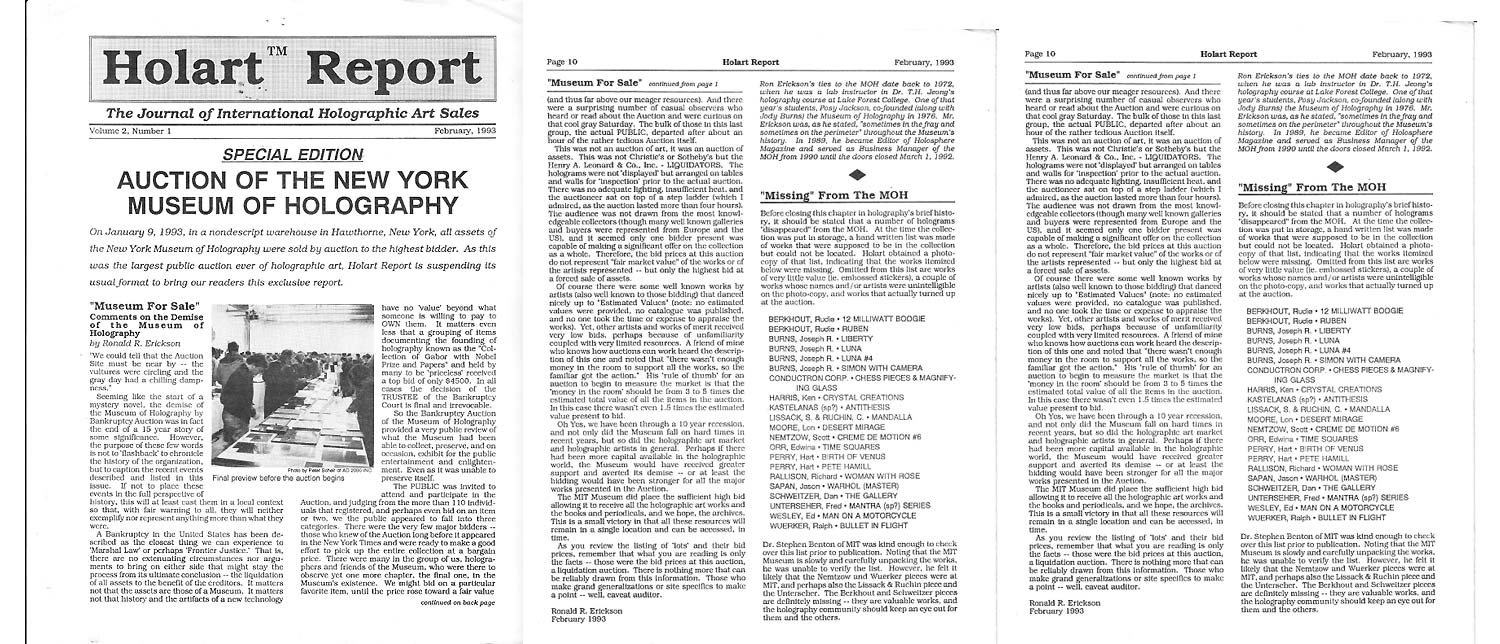
The entire collection was sold at a discount price to MIT because the interest on the part of individuals buying the works was generally lacking.
Download Holart article in PDF Holart Report -- 'Auction of the Museum of Holography'.
------------------------------------------
------------- Page Top -------------
6.0 Standards for valuation? Are there any?
While Holos Gallery and Mr. Zellerbach didn't invent prices based on arbitrary or subjective standards, those who celebrated it in holography and were exhibited there along 'giftware' with no obvious distinction between them except for price -- depending if it was larger than 8 x 10 inches (making it 'art') or smaller than 8 x 10 inches (making it 'giftware') -- were as culpable as the gallerist promoting this standard which then relied on 'artists' with little prior experience in the arts to fill in the rest (with appropriate descriptions).
But I would like to interject a personal experience for the sake of comparison and add details which I personally know.
Personal life example selling art based on established principles

I wrote previously: "Questions of authenticity, provenance, and authorship are chief to any valuation.". To illustrate an answer to these questions consider my own work NEWTONIAN GALACTIC ASSEMBLY LINE (pictured), created by me in 1974, exhibited internationally, and currently residing in my studio, where it is indeed 'for sale'.
The authenticity of this work is beyond question, it is documented in photographs, videos, international news stories with the same name, and artist designation. It is dated in the original exhibition ('Visual Alchemy' 1977) catalogue. The 'art status' of this work, and the fact that it can be called 'holographic art' was bestowed upon it when it was first exhibited in 1977 at the Burnaby Art Gallery, afterwards going on national and international tours to other art galleries and museums, like the Science Museum in London, England.
Other 'claimants to this work' have included my hired laboratory assistant, a guy who later made a few holograms of his own. That's what I heard, that was the 'story'. This information came from by way of the local 'holo harpy', whose contributions to the scene I discuss in my essay 'Art and Holography - Part 3' in APPENDIX C, which is the section on 'Canadian Holographic History' and the selective writing out of it of 'people like me'... This problem is well documented.
The exhibition card (for the exhibition 'Deja Vu' Vancouver, 2010) for this work is as follows and contains an selected list of international venues where this work was exhibited. It is to be noted again that this wall piece was originally designed as a 'floor piece' of repeating and scalable numbers of panels. As a wall piece it was also designed to be used with a 'kinetic illumination system', meaning moving light or several lights cross-fading with each other, to give the work that 'sea anenome effect' of undulating light movement.
The price for this work is currently (as revised in 2023) set at $90,000 USD, and that's a direct sale from the artist. How was the price set? It was set on the basis of the last sale price that had been transacted and an 'inflationary principle' which means that since it had been purchased for $30,000 in 1990 by a private collector in Kuwait, brokered then by Eve Ritscher who had exhibited this piece in several venues in Europe, that's where we started from. Ritscher set the initial price amount - the purchase price of this holographic art was confirmed to me in writing by the declared purchase.
The fact that this deal 'fell through' due to the August 1990 Iraqi invasion of Kuwait' does not change the fact that this work was sold, and now has 'inflated' in value. This inflation is also due to the artist's (Al Razutis) prolific and subsequent output of works, its valuation, and their acceptance of these works in collections, in exhibitions and critical historical writings. All of this is searchable on the web.
From 'A Cultural History of the Hologram' by Prof. Sean Johnston

CATEGORIES OF ABSURDITY MAKE FOR POOR VALUATIONS
CATEGORIES OF ABSURDITY in valuation of holographic 'art' objects include such common sayings as "What's in your wallet?" when applied to valuation of that which is calling itself 'holographic art'. In other words, if you 'call it art', then 'it must be so' goes the reasoning for many.
It's clear from a cultural perspective that if one doesn't respond to arbitrary standards, or non-standards, or inappropriate standards, then they get 'engraved in stone', passing for 'authority'. Authority grows when there is no opposition, no criticism, no questioning.
A scene that can't differentiate between authentic, borrowed or stolen, has no business demanding that the rest of culture accomodate it as a 'fine art'. I hope that is clear by now in our 'business'.
-- See my 'F is for Fake' section in the essay 'Art and Holography Part 2' ABOVE for more on these subjects of appropriation and standards of authorship and authenticity.
-- Examples of a hologram 'pyramid', first from 1970's Visual Alchemy (C. MacTavish, A. Razutis) and to include models used, then example of Jason Sapan showing virtually identical one in his shop Holographic Studios in NYC and implying authorship as if it was 'his'...

More on NYC Holographic Studios 'The Case of Jason Sapan - Invented world'
----------------------------------------
7.0 Conclusion - 'Is it art?' 'What is it worth?'
We haven't heard much from professional curators and academics on this. So let's close with some contemporary examples.
What do contemporary curators think of holography? Some quotes, please?
The following quotes from the writing of Gregory Moynahan in his essay 'Holography and the Aesthetics of the "Hyperreal,', 2012, which are contained in my 2020 essay 'Art and Holography 3' at the this link 'Pictures From the Moon' Exhibition and are excerpted below. They are 'essential reading' for this essay. They pertain to how the fine arts curator community reflects on whether holography is art at all, and how it can be related to 'fine art' in our modern society.
|
"Holograms have had a complicated relationship with art history. Although once proclaimed to be the medium of the future, with predictions that the technology would be as important an invention as the printing press and replace such traditional means as painting and sculpture, holography never fulfilled those expectations. It remains a marginalized medium, one equally entangled with esoteric technology and with lowbrow kitsch. That holography has remained in this position is peculiar when one traces its development within the context of other artistic mediums. Artists began to experiment with a range of innovative technologies, like photography and video, in the 1960s. These formats acquired greater acceptance around the same time that artists first gained access to holographic technology. While photography and video are commonplace in contemporary art today, holography remains suspect." (GM) ( ... ) "Despite holography's appearance as one of the few entirely uncharted new mediums for art in the second half of the twentieth century, its acceptance by the art community was remarkably slow. Surveying the reception of laser holography in art from its invention in 1962 through 1993, the critic Edward Lucie - Smith noted that critics had almost universally considered it as 'irredeemable kitsch.' " "Most critics found neither the choice of content nor the form of the work of high quality; many were perplexed by the nature of 'images [that] were disturbingly there and not there.' There are, of course, some aesthetic grounds for these complaints. Holograms suffer from what might be termed the 'stereoscope effect' where, precisely in their timeless realism and infinite depth of field, animate beings in particular often appear hauntingly unreal, as if revealed through a new type of taxidermy. Due to the relative complexity of the holographic process, it is also difficult to match medium and content reflexively, and thus to comment on the form of representation in the manner of visual art traditions such as those ranging from Dutch Realism to Abstract Expressionism. Underlying these aesthetic issues is perhaps a more fundamental theme that has haunted the aesthetics of holography: the relation of art and reality itself. Indeed, from some quarters this relation seemed to be the salient feature of holography. In 1986, Umberto Eco used holography as the framing model for his essay 'Travels in Hyperreality,' describing it as a peculiar art 'that could only prosper in America, a country obsessed with realism, where, if a reconstruction is to be credible, it must be absolutely iconic, a perfect likeness, a 'real' copy of the reality being presented.' " (GM) ( ... ) "To early critics, holography often presented a movement of art away from representation to exact replication and, with it, a breakdown in the meaning of art itself. An absolutely perfect hologram would, in theory, simply re-create an original object, and the frame for creative interpretation would thus either disappear or shift entirely to the initial object itself. The problem is not new of course. Charles Baudelaire had famously excoriated the 'new industry' of photography for making good on the false claim that 'art is, and can only be, the exact reproduction of nature.' The result for Baudelaire was 'to ruin what vestige of the divine might still have remained in the French mind' and to 'have singularly diminished [people's] capacity for judging and feeling those things that are most ethereal and immaterial.' " (GM) ( ... ) "Baudelaire's resolution to this problem for photography was that it should take on the role of being the 'very humble handmaid' to the arts and sciences, to be the 'record - keeper for whomsoever needs absolute material accuracy for professional reasons.' Holography has more than fulfilled its modern variant of this role, but it remains aesthetically suspect in a manner photography has long since overcome." (GM) ( ... ) "Taken together, the images already suggest some of the aesthetic challenges designers had to confront. Notably, despite the fame of the magazine for its nature photography, in keeping with the stereoscope effect, none of the images are of animate beings or humans. Oliver Wendell Holmes described the original stereoscope as containing a 'frightful amount of detail' that 'spares us nothing... The sun is no respecter of persons or of things.' " (GM) ( ... ) "he uncanniness of the hologram suggests a new level to this problem... If the mind feels that perceived reality doesn't match the physical effect, it occasionally assumes that it is hallucinating and provokes the body to become physically sick. The static hologram, particularly in its more technically convincing forms, seems to approach a similar but less visceral 'unreality' precisely in its approach to a veridical three - dimensional form. " (GM) ( ... ) "Despite problems with the quality, particularly the transparency, of the holographic image, the hologram does appear to exist 'on its own' in a singular manner that allows it to take on a form of reality somehow distinct from 'normal' reality. ( ... ) the image appears to 'stand on its own' in such a way that it is at once independent from any staging and from any framing of our perceptual apparatus. " (GM) -- 'Holography and the Aesthetics of the Hyperreal', Gregory Moynahan, 2012 |
What do I think in conclusion?
Valuation is based on social factors, value has no intrinsic standard except in terms I discuss below. The value of something like a 'hologram' which has been 'listed as fine art' is determined by 'who thinks what of what it's worth'. The same applies to 'display art', its market and valuation.
Obviously, as a social construct, valuation is based on selling others (the 'market') on 'what it is worth'. In other words, it is based on salesmanship. It is based on playing the game, promoting, praising everyone so in return one is praised, it can be based on inventing stories (as we have seen here on this page), carrying on deceptions (sometimes for decades, sometimes only on the basis of an event), and making sure to be gracious, pretending humility, and sometimes telling jokes... (Strangely enough, being a 'funny guy', or a 'great guy' trumps 'telling the truth' in every scene, any scene I have visited in the media arts...)
Salesmanship is based on persuasion, rhetoric, not about facts or telling the truth. Persuasion can be verbal, sexual, visual, psychological, social, hence the importance of 'market' and 'group', and 'group think'.
Salemanship does not like that 'negative stuff around', doesn't like those 'asking questions', doubting authority when it is flimsy or just implied. Salesmanship is all about selling the item at the declared worth or close to it. The market. The group. The ego. The stimulation of what prompts behavior to 'buy', to 'invest', to 'own', to extoll and praise, to share with others, to brag about one's part in this too.
Salesmanship to academia, to historians, to curators and gallerists, now 'That's where the money is! That's who'll keep inflating this art or cultural object's worth!' Call in the PR departments! Certainly, that's the way it works in business regardless of the industry. Have others talk about your work, 'make sure it is praiseworthy!' It's either that or 'sell it to the entertainment and advertising industry!' Yes, that's how it's worked and why salesmanship and valuation go hand in hand.
There is no 'objective standard' that can be applied to the game of persuasion and selling. Gross sales, net profit, are not objective standards that can be isolated from other influences. It's not right or wrong, it's relative to the goals (to be achieved) and the society (and its values).
Is there intrinsic value to 'Truth and Beauty'?
Is there intrinsic value to 'truth'? I say there is. Is there intrinsic value to 'beauty'? I say there is.
Implicit in both are the presence of their opposites. With truth comes untruth (lie), with beauty comes ugliness. Both have value, there is no cancellation, symmetry, or any yin yang about this. All are part of the same pie. And when it is genuinely cooked, in the manner of art or kitchen alchemy, the value and the experience are unmistakable and 'precious'.
There is no need to explain this further. The end of a simple poem which remains a favorite:
"Beauty is truth, truth beauty, -- that is all
Ye know on earth, and all ye need to know."
---- John Keats, 'Ode to a Grecian Urn'
"And then? And then, we can talk about 'justice'!" (A.R.)
( FAST FORWARD )
Fast forward to September 2020 when art holography or holographic art has been assimilated into whatever you want to call it, with no particular reasons given, and 'someone is interested in buying holos', now what do you have?
As stated in the beginning of this essay it was Face Book group "Holography" that received a post call for "Is anyone selling any holograms?", and a long very long response thread with 'here comes everybody!' selling their collections ensued --- 'the rumage sale season is upon us!'. And the prices? And their value? Well, you've read about some of this, and how this happened, and how it goes now into this next century is anyone's guess.
(Al Razutis, 2020 / 2021)
A 'learned companion' to this essay done in a 'contentious style':
'Art and Holography 3' and getting there by Al Razutis, 2020 / 2021

------------- Page Top -------------
APPENDIX:
Web sites referred to in this essay.
SELWYN LISSACK WEB SITE -- http://www.dalihologram.com/aboutsel.html
HOLOS GALLERY ON LINE -- https://www.garyzellerbach.com/HGO/hgoindex.html
MARK DIAMOND WEB SITE -- www.diamondimages.com
HANS BJKELHAGEN WEB SITE -- http://www.hansholo.com/items-for-sale.html
IRIDESCENCE WEB SITE -- https://www.iridescence-expo.org/
VISUAL ALCHEMY WEB SITE -- http://www.alchemists.com/visual_alchemy/holography.html
------------------------------------
'3D - The Last Dance'
"In cultures where artists produce mainly commodities to be bought and sold again and again the idea of novelty is never a winner. There's always something 'younger', 'newer', 'more exciting'. This ticket of novelty and fantasy was the 'story of the 3D arts' for a long time, over a century. When this story runs out of ideas, out of novelties, which is about now in our culture, it's when the 'lights go out and the dance is over'."
"3D - The last dance it was, but of course it's all waiting to be reinvented." -- Al Razutis, 2020
---------------------------------------
A Post Script to all this:
The last big show from Canada that 'vanished', but the Canucks don't seem to care!
Lost in Time and Space -- Al Razutis, 1992
------------- Page Top -------------
VISUAL
ALCHEMY & WORKS on FACEBOOK
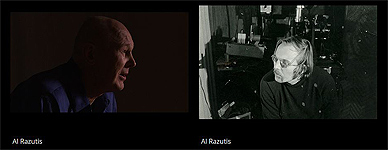
HOME PAGE:
Al
Razutis - Visual Alchemy WEB SITE
